Creating an inviting front yard patio is one of the fastest ways to turn a simple entry into a social destination that lifts curb appeal and livability in equal measure. Designers keep emphasizing patios at the street edge because the space encourages neighborly chats, extends usable square footage for small homes, and showcases personal style before visitors even knock. Recent outdoor-living trend reports predict that 2025 will see a rise in multi-functional, tech-ready patios, permeable hardscapes, and low-maintenance plant palettes that still deliver color and habitat value.
1. Cozy Bistro Nook Front Yard Patio
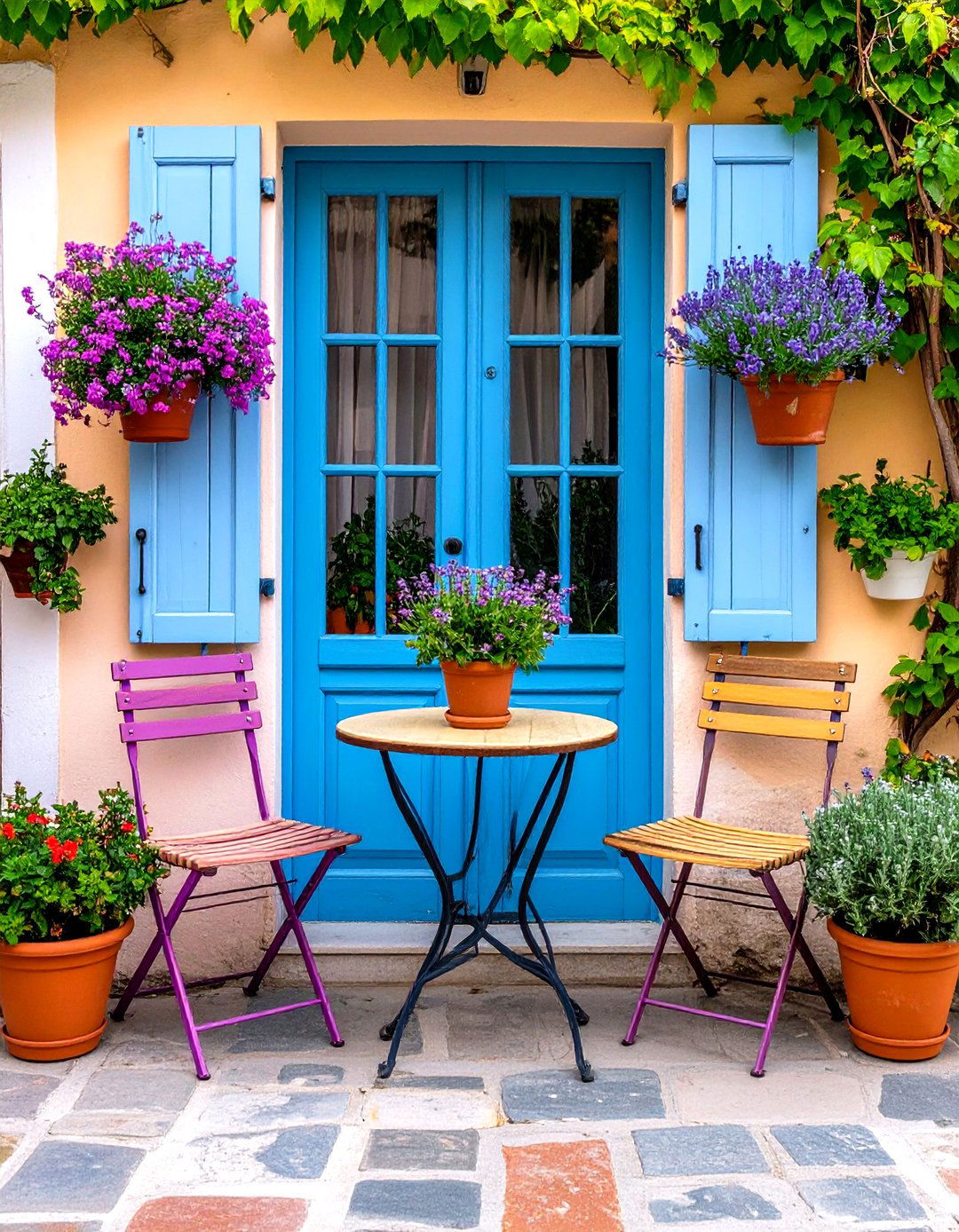
A welcoming café-style nook can slip into the tightest footprint beside the entry path. Begin with a pair of café chairs and a slender table sized to hold morning coffee yet small enough not to crowd walkways. Experts note that positioning the furniture perpendicular to the door, rather than square on, lets foot traffic flow naturally while still signalling “please sit.” Add planters of fragrant herbs at chair height so guests brush rosemary or mint en route, layering scent into the experience. A simple outdoor rug defines the zone without requiring structural work, and a bold door color or patterned cushion ties the patio visually to the façade, boosting unity from curb to threshold.
2. Permeable Paver Front Yard Patio Platform
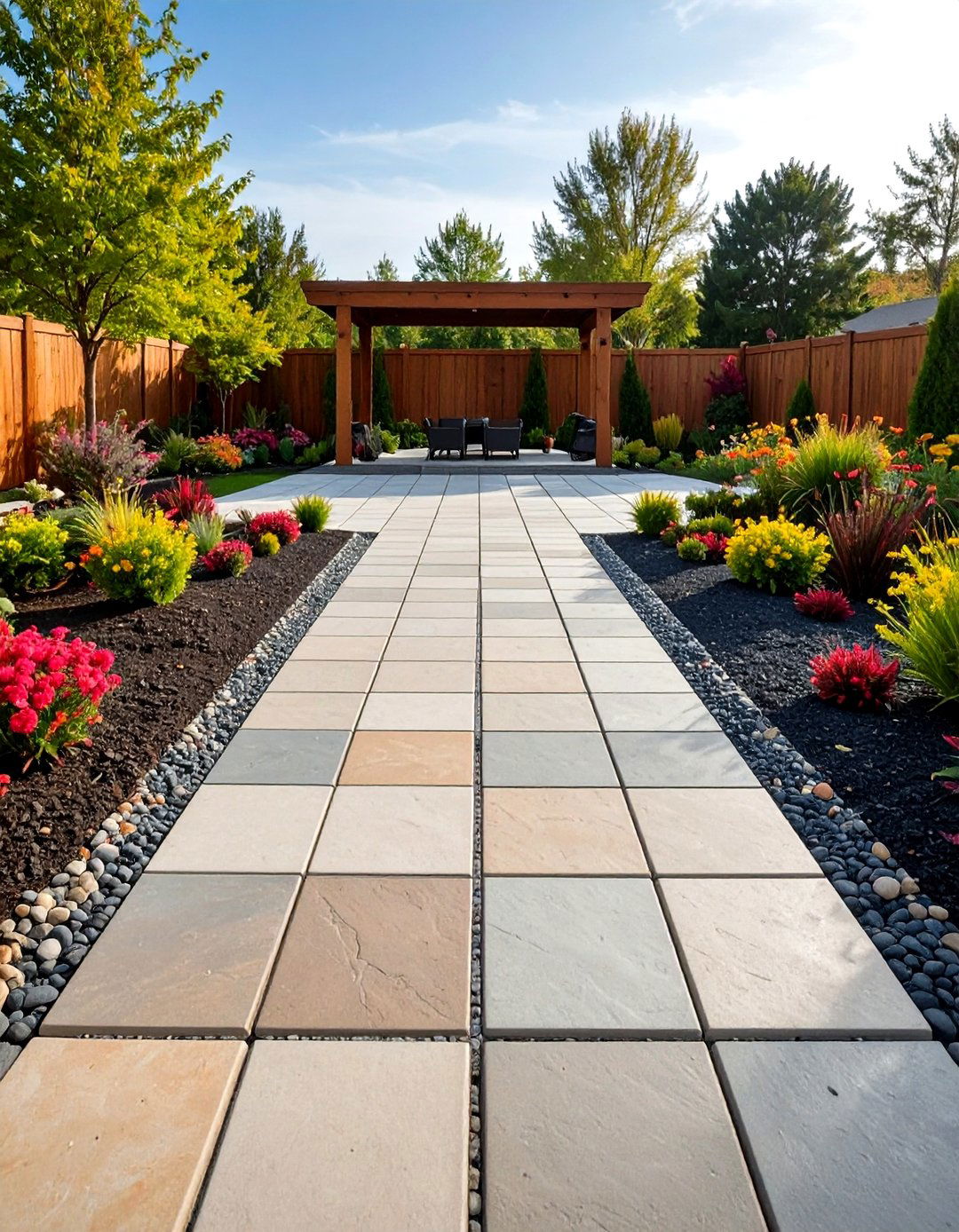
Swapping a solid slab for permeable pavers answers modern calls for sustainability and code-friendly storm-water management. The wider joint gaps between the pavers allow rain to soak through gravel beds below, reducing runoff and icy puddles in winter. Because modules come in multiple colors and shapes, you can weave contrasting borders or subtle geometric rugs directly into the hardscape—no paint needed. Maintenance stays minimal: an annual sweep of joint grit and the occasional top-up of fine gravel keep everything draining freely. Homeowners in snow zones appreciate that thaw–freeze damage drops dramatically, extending patio life while protecting foundations and adjacent flowerbeds from splash-back erosion.
3. Pea-Gravel Courtyard Front Yard Patio
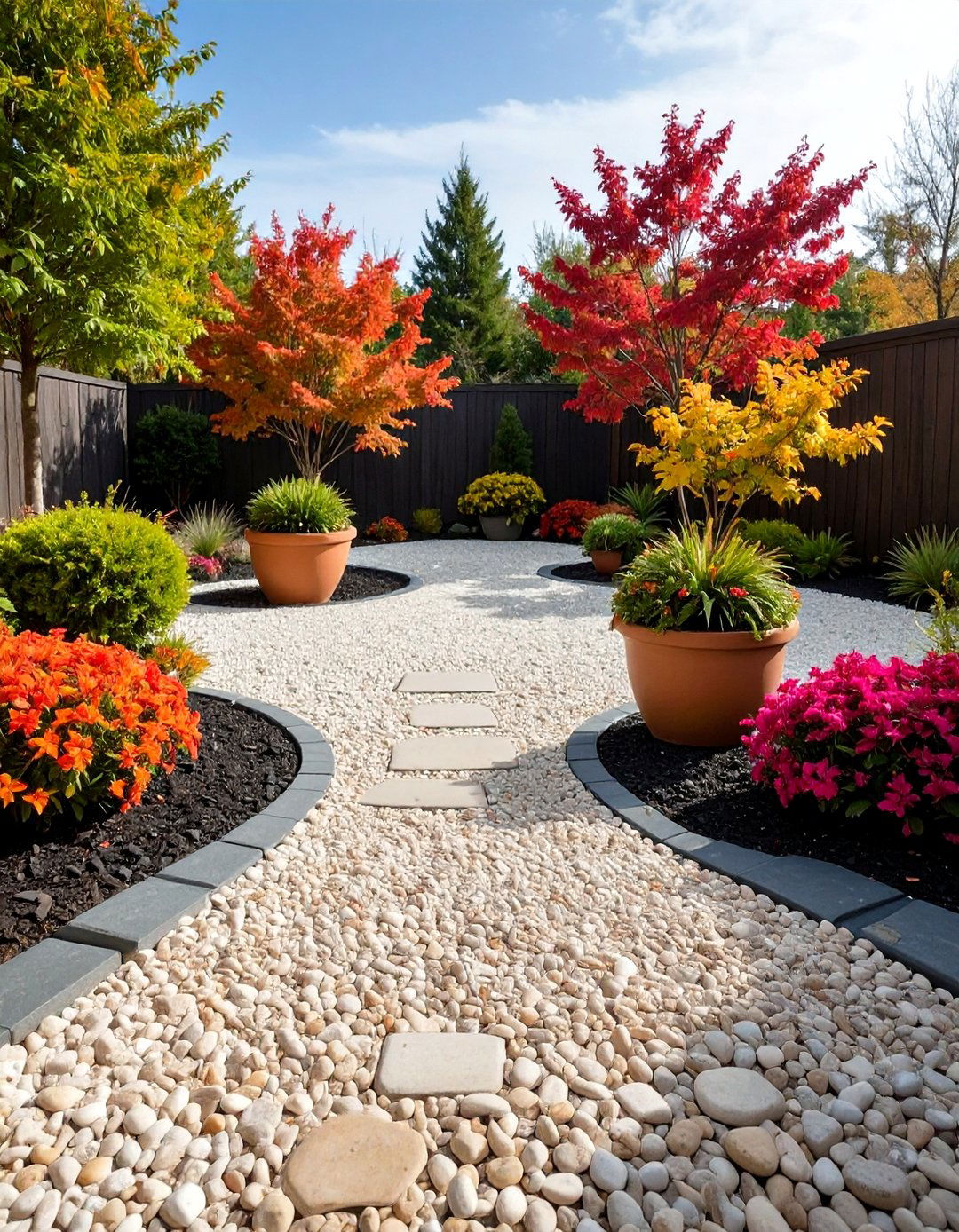
Unlike heavy masonry, pea gravel pours into place over a compacted base, making it friendly for DIYers and adaptable for irregular footprints. When properly installed with an edging restraint, the surface flexes, drains, and suppresses weeds, all while adding a soft crunch underfoot that many users find charming. To prevent chair legs from sinking, set paver “islands” where seating will live, or choose wide-leg furniture. Gravel’s neutral palette pairs easily with colorful container groupings; cluster pots at varying heights to build a living backdrop that can morph seasonally without re-laying the patio. A discreet honeycomb stabilizer sheet below the stones keeps the top layer tidy even after years of gatherings.
4. Native Plant Border Front Yard Patio

Framing the patio with low-growing native edging plants creates a vibrant transition that supports pollinators and reduces irrigation needs. Blue-eyed grass, lyreleaf sage, and river oats are standout choices for their fine texture and adaptability to compacted soils often found near hardscapes. Because these species evolved locally, they shrug off pests and late-season drought while still delivering flowers or graceful seed heads for visual interest. The planting strip doubles as a gentle psychological boundary—hinting “this is seating space” without erecting a fence. Leave a two-inch gravel buffer at the paver edge to keep soil off the patio, then mulch deeply to limit weeds and hold moisture.
5. Pergola-Covered Front Yard Patio Escape

Installing a light-framed pergola over the front yard patio invites climbing vines, holiday décor, and shade sails while preserving an open-air feel. Home galleries show that even slim posts can support cantilever beams, keeping views to the street uncluttered. Consider translucent polycarbonate panels on top if you crave rain protection without darkness. For a modern take, paint the structure the same tone as window trim; for cottage character, stain it to match shutters. Training fragrant jasmine or star-climbing clematis up the corners perfumes summer evenings and softens the architecture over time. Integrated hooks along the rafters simplify hanging lanterns, wind chimes, or bird-safe ornaments.
6. Fire-Pit Gathering Front Yard Patio
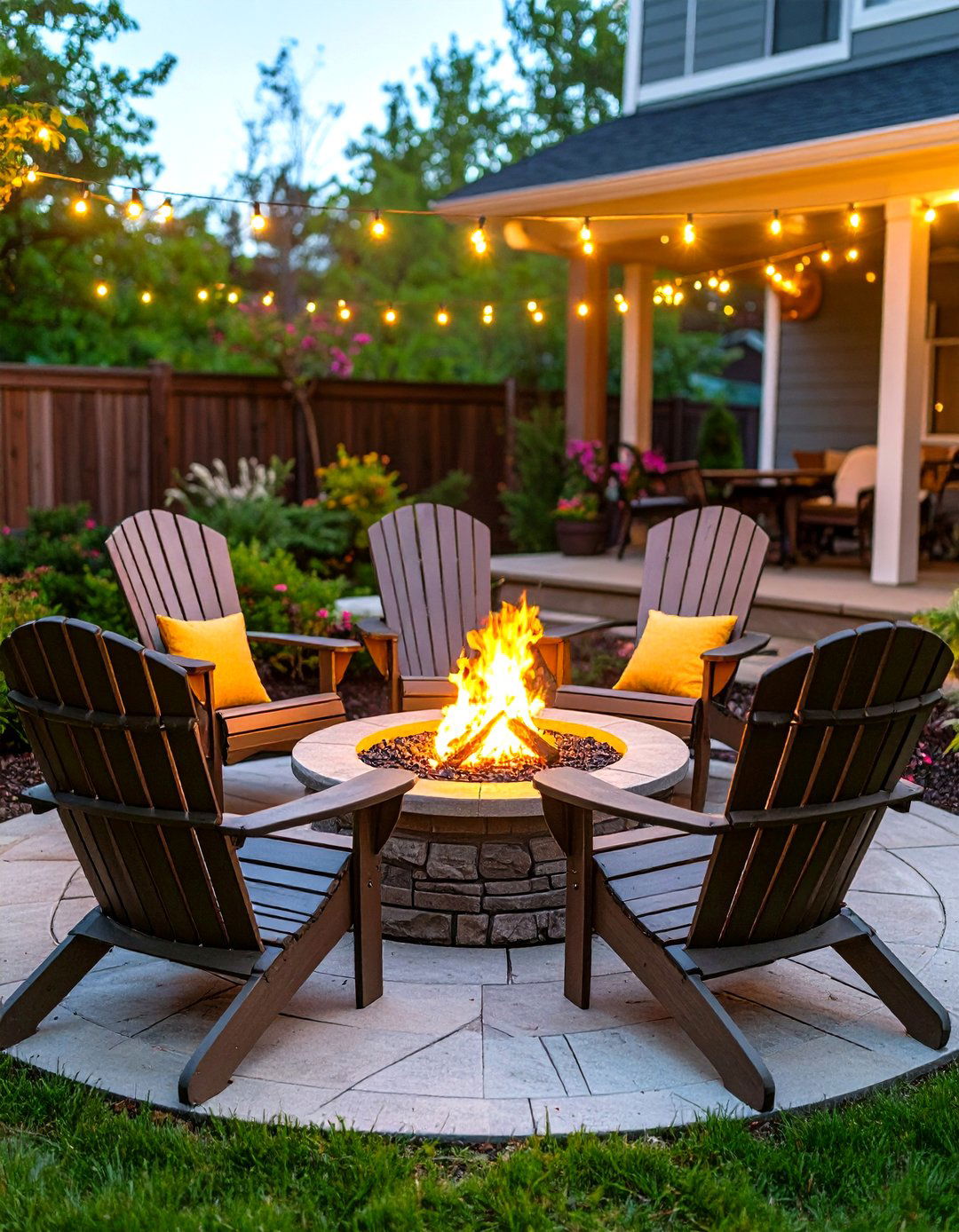
A compact gas or wood fire pit turns the patio into four-season living space, yet safety spacing matters. Keep at least a 3-meter (10-foot) buffer from the house, fencing, and low branches, and verify local codes before lighting up. 2025 trend forecasts rank fire features among the top outdoor upgrades for extending entertaining hours into cooler months. Surround the pit with Adirondack-style chairs angled conversationally; their reclined backs direct sparks upward and encourage lingering. Overhead, drape string lights in a gentle radius—homeowners report that the extra glow encourages marshmallow roasts long after sunset without overpowering the night sky.
7. Built-In Bench Seating Front Yard Patio
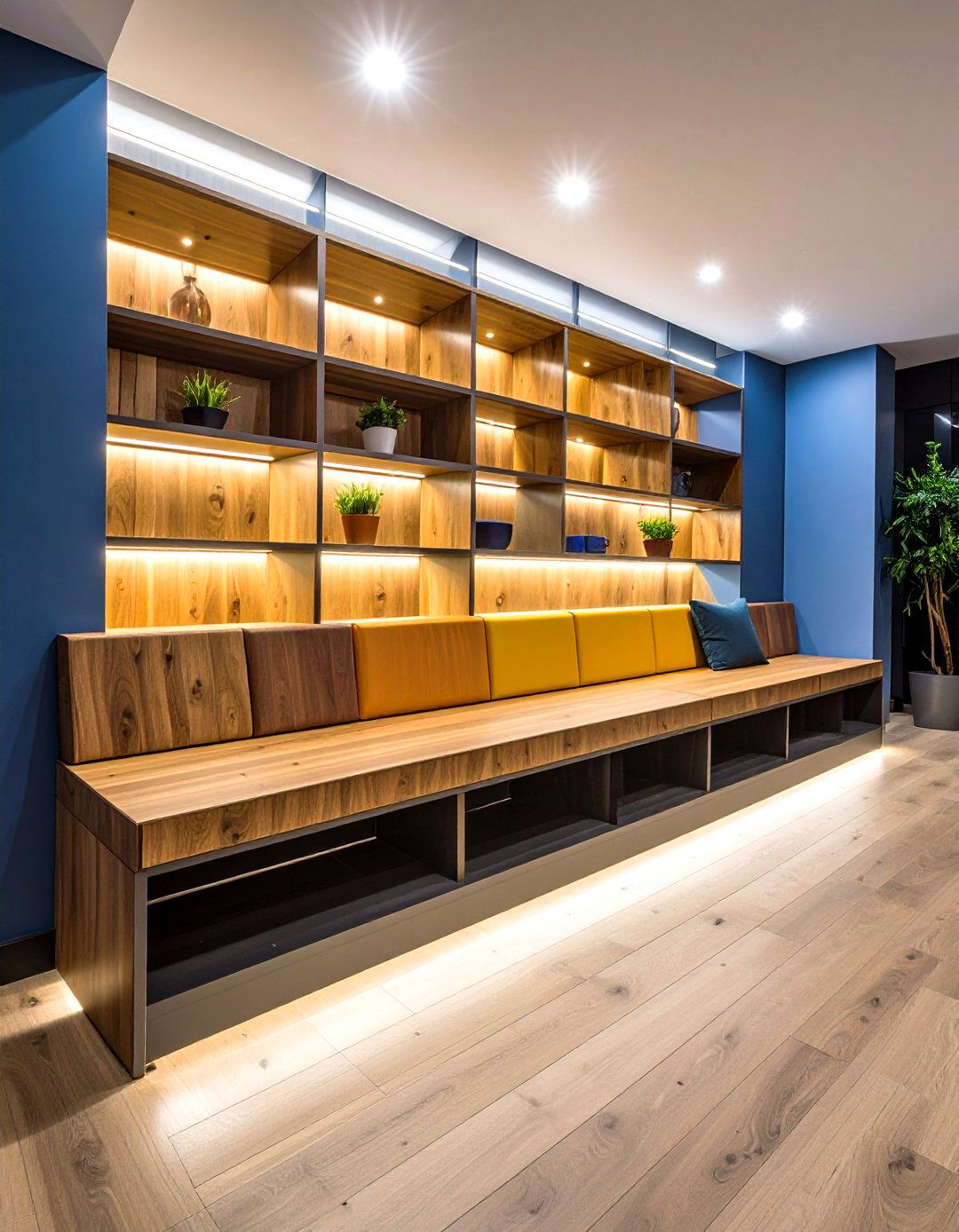
Perimeter benches free up usable floor area because they hug the patio edge, doubling as knee-height retaining walls if grade changes demand it. Inspiration boards illustrate benches capped in smooth hardwoods atop masonry cores, delivering durability and comfort with a single gesture. Add weather-proof cushions in a fearless accent hue and tuck storage cubbies or pull-out planters below the seats. Built-ins also accommodate extra guests without hauling chairs from indoors and provide a natural spot for sculptural pillows or seasonal throws. Lighting pros recommend installing low-voltage tape lights under the bench lip so the structure appears to float after dark, aiding safety and ambiance in one stroke.
8. Fountain-Forward Front Yard Patio
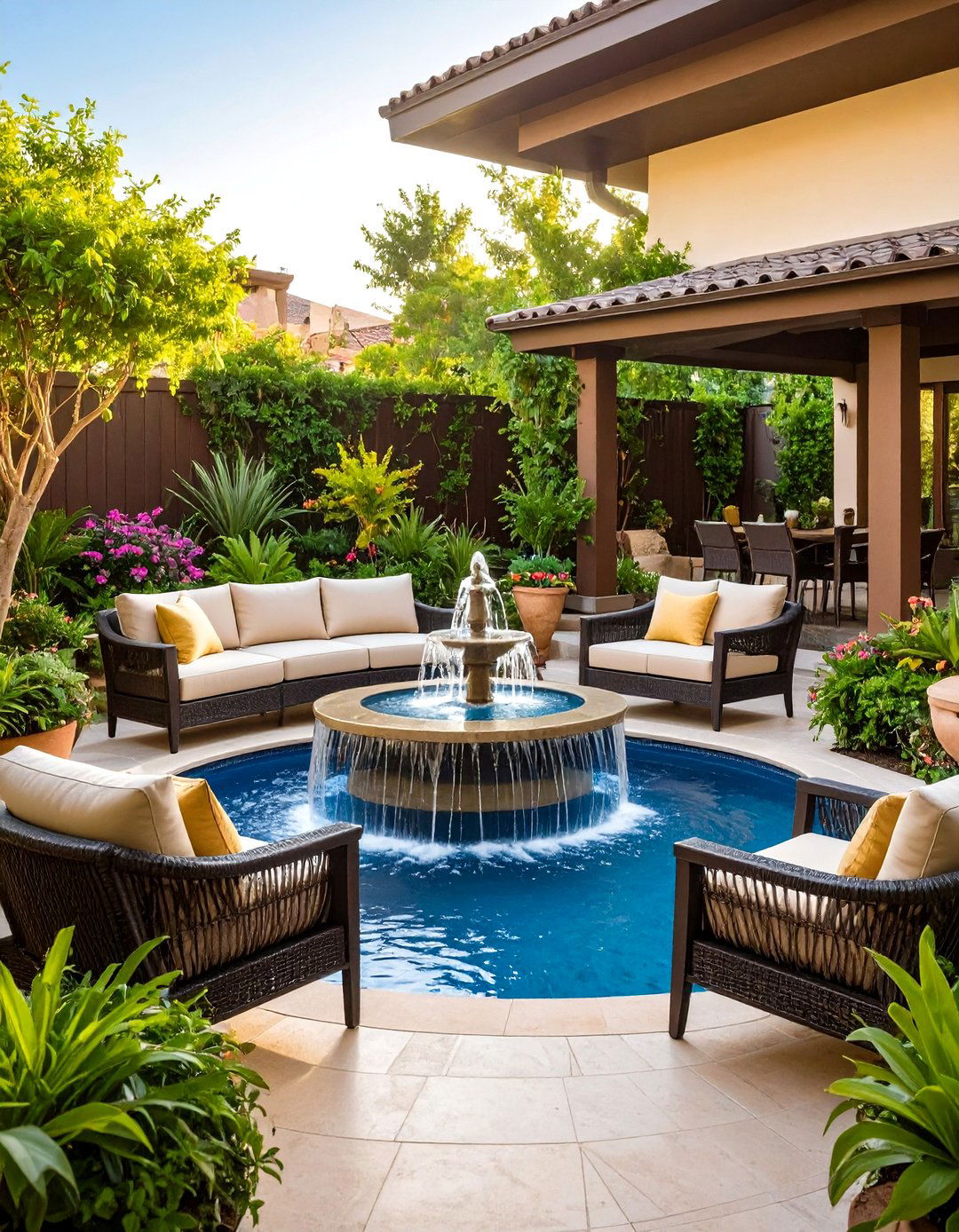
The gentle burble of moving water masks street noise and invites birds, instantly recasting the patio as a mini-oasis. Studies on water-feature psychology link fountain sound to measurable stress reduction and improved mindfulness. Choose a self-contained, pump-ready bowl for small footprints or a multi-tier cascade for bolder statements; cascading designs amplify acoustic coverage without draining batteries. Situate the fountain slightly off-center to avoid splitting the seating zone visually and to leave maintenance access behind. For easiest upkeep, select models with removable pump housings and integrated filters—users report cleaning every six weeks keeps algae at bay even in sunny exposures.
9. Illuminated Front Yard Patio with LED Path & String Lights
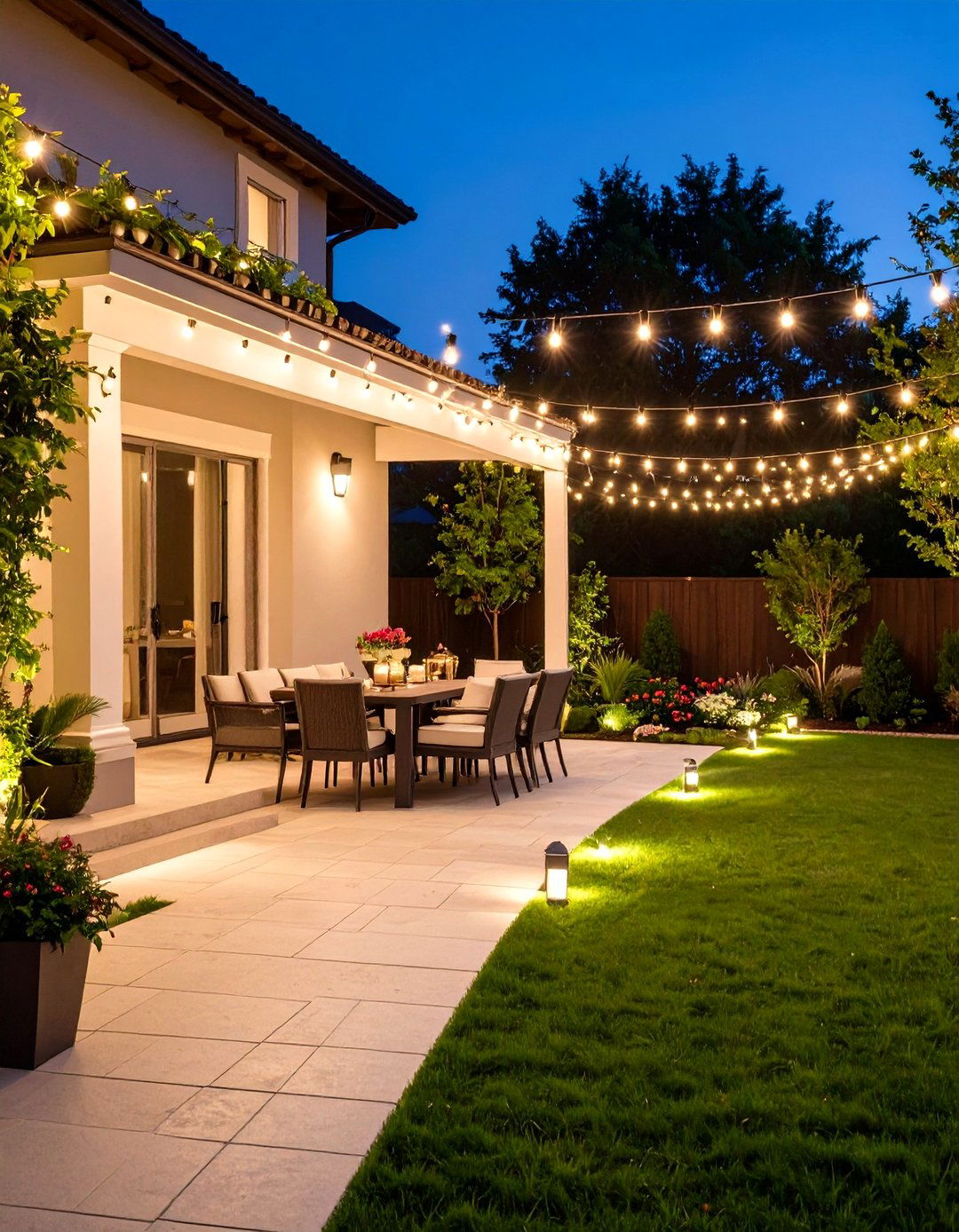
Layered lighting transforms a patio from a daytime perch to an evening lounge. Low-voltage LED path fixtures sip power yet cast reassuring pools along walkways, while overhead string-light canopies inject café ambiance. Modern LEDs run cool to the touch and endure weather swings, reducing bulb-change headaches. If hard-wiring is tricky by the curb, solar-assisted hybrids now bridge the gap, storing power by day and auto-dimming at midnight to preserve skies and extend battery life. Designers suggest choosing a warm 2700 K color temperature so the glow flatters skin tones and brickwork alike, encouraging spontaneous evening chats.
10. Privacy-Screened Front Yard Patio Haven
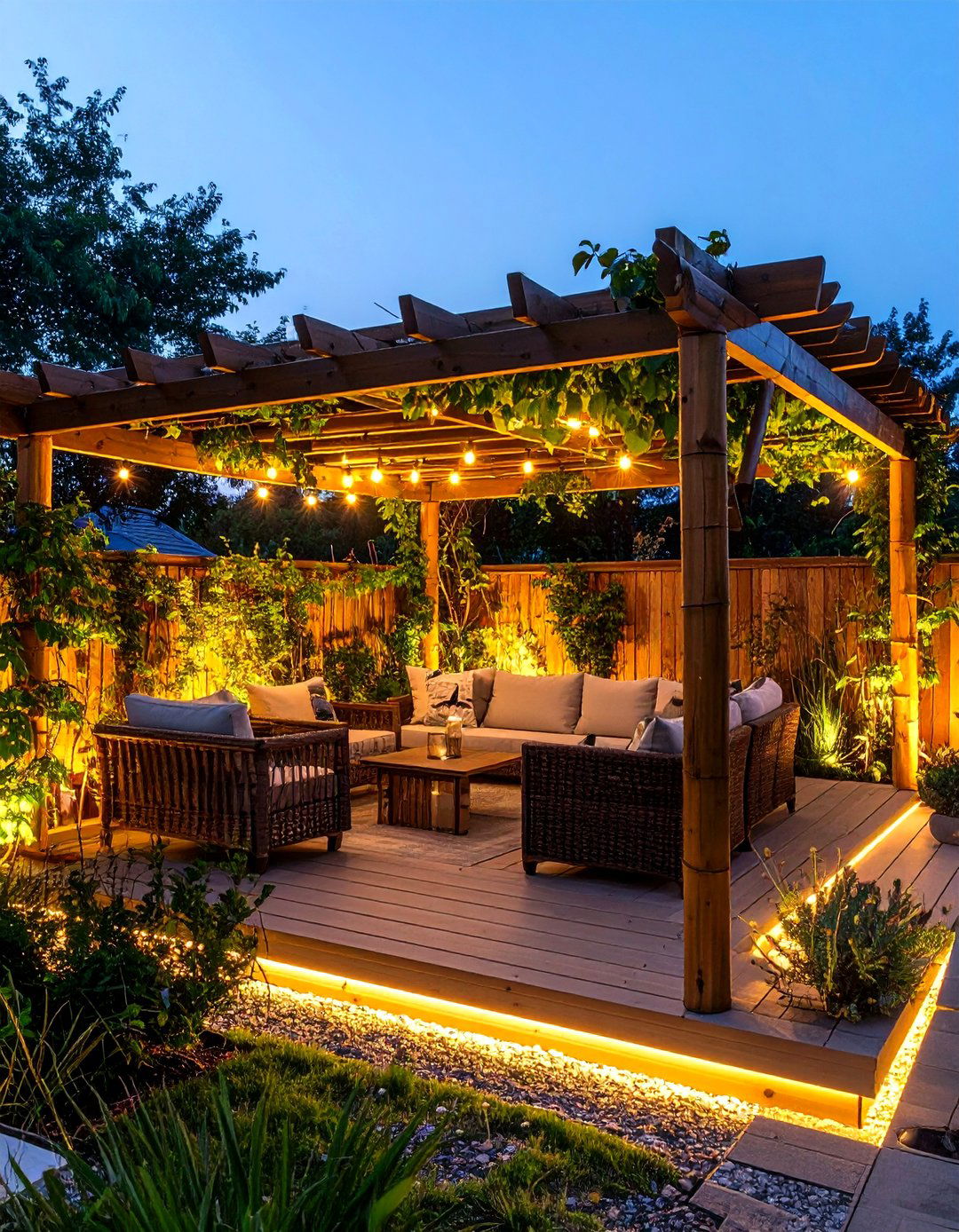
Even a few feet from the sidewalk, you can feel secluded by layering lattice panels, modular trellises, or tall bamboo screens at seat-back height. By planting evergreen vines or clumping grasses at their base, the living wall thickens over time, filtering headlights and prevailing breezes. Portable screens let renters reclaim deposits by moving the setup to a new address, while homeowners often anchor posts in planter boxes to avoid digging utilities. Finish the scene with a narrow border of LED up-lights so foliage glows at dusk, heightening drama without giving away interior privacy.
11. Accessible Front Yard Patio Design
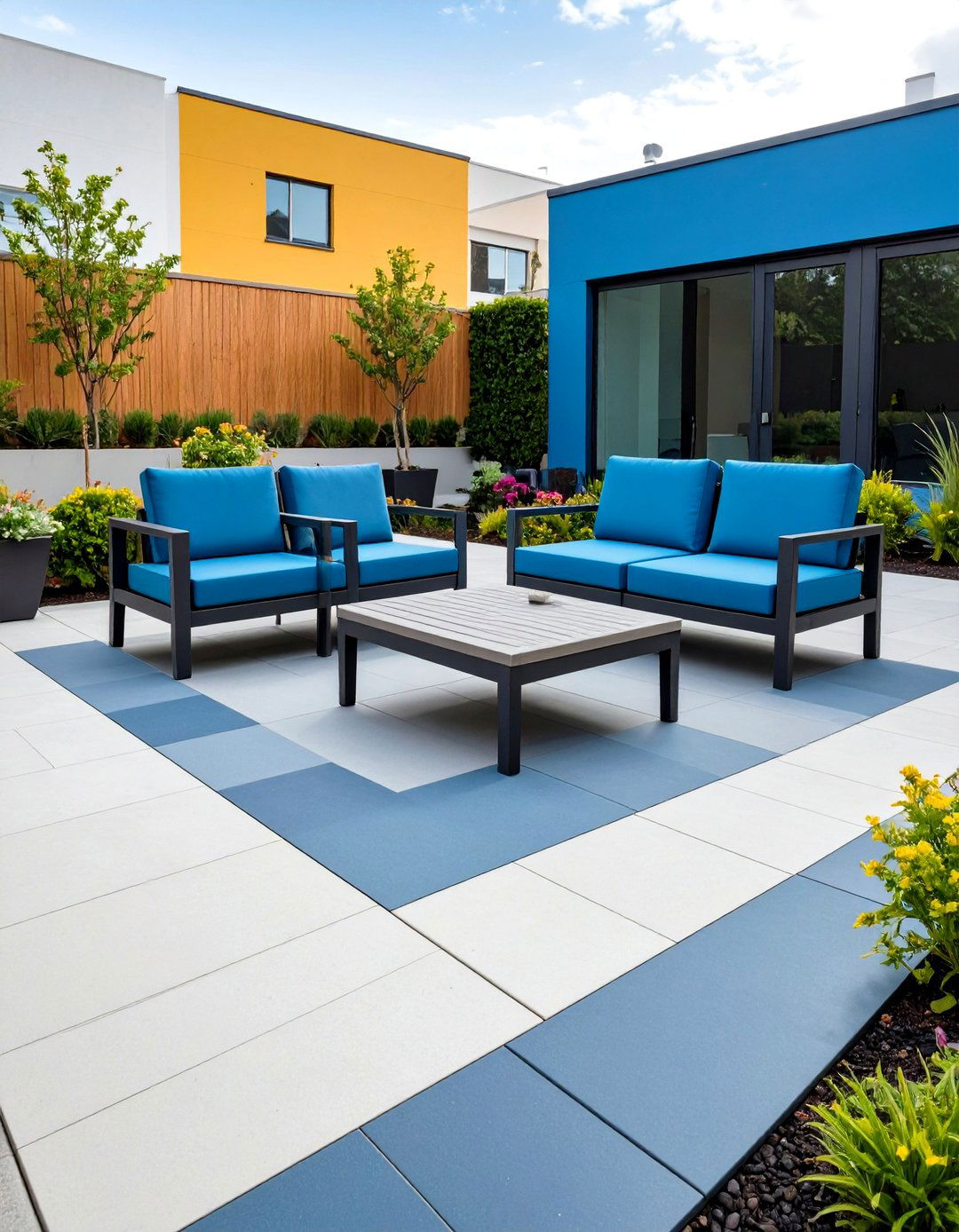
Universal-design guidelines recommend a 1.5-meter turning diameter and slopes no steeper than 1:20 to welcome wheelchairs, strollers, and walkers. A flush threshold from the driveway or sidewalk eliminates tripping hazards and also simplifies furniture rearrangement. Surface textures should stay under 5 mm relief so canes don’t catch; large-format pavers or broom-finished concrete meet the spec beautifully. Designers advise contrasting edge bands or tactile grooves to cue changes in grade for low-vision users. Rounding corners on seat walls and planters reduces bruises, while lever-style gate latches replace knobs for easier grip—all without compromising the patio’s aesthetic flair.
12. Edible Container-Garden Front Yard Patio

Vertical towers of herbs, strawberries, or dwarf tomatoes transform a sunny patio corner into a micro-farm that doubles as décor. Garden writers highlight trellises, wall pockets, and stacked pots as ideal solutions for squeezing produce into limited square footage. Choose compact cultivars bred for pots—think ‘Patio Choice’ tomatoes or trailing rosemary—and intermix flowering edibles like nasturtium to invite pollinators. Raised containers lift harvests to chair height, easing picking chores and sparing knees, while drip-line kits run neatly up support poles, ensuring consistent moisture without hoses underfoot. Occasionally swapping spent annuals for seasonal greens keeps the display fresh all year.
13. Terraced Front Yard Patio for Slopes
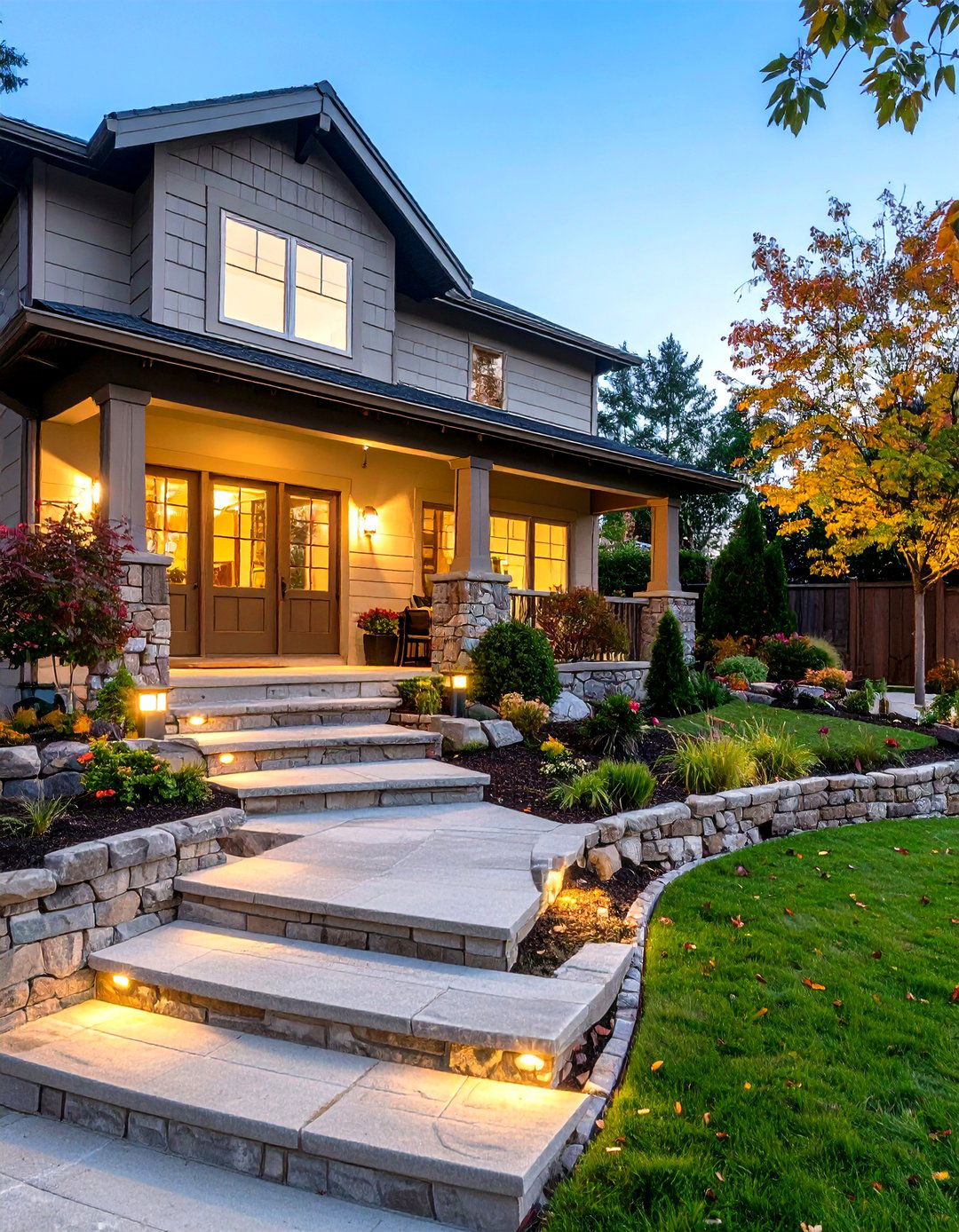
On a grade, stepping the patio into two or three terraces joined by wide tread stairs creates level gathering zones and slows runoff. Retaining-wall blocks or natural stone risers prevent soil creep and act as informal seating during parties. A narrow planting shelf at the back of each tier accepts drought-tough grasses or low shrubs, softening the masonry. Where budget allows, integrate LED step lights into wall faces to guide evening visitors safely. Owners on forums report that terracing also quiets road noise because each wall reflects sound back towards the street rather than up toward living areas.
14. Modern Minimalist Concrete Front Yard Patio
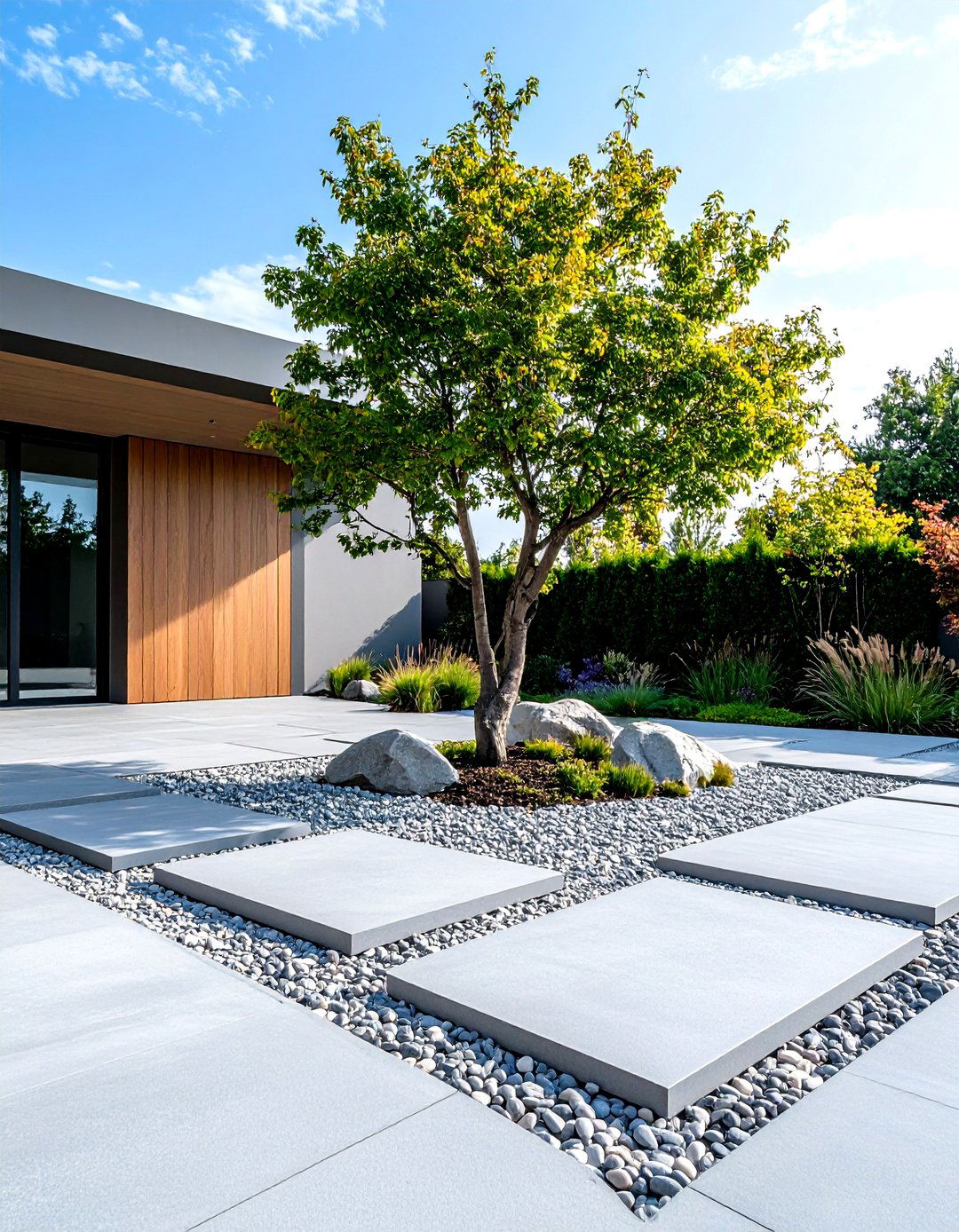
Sleek, oversized concrete slabs punctuated by gravel joints produce the crisp lines admired in contemporary design. Recent style round-ups show homeowners favor neutral gray or charcoal slabs contrasted with black planters and a single sculptural tree for drama. To keep temperatures comfortable, specify a light-reflective mix or add a pergola with slatted shading above seating. Expansion grooves cut in a geometric grid double as design elements and reduce cracking. For an eco-upgrade, consider substituting up to 30 % recycled glass or fly-ash in the mix—a strategy that experts say maintains strength while slashing carbon footprint.
15. Cottage Brick Front Yard Patio with Flower Beds
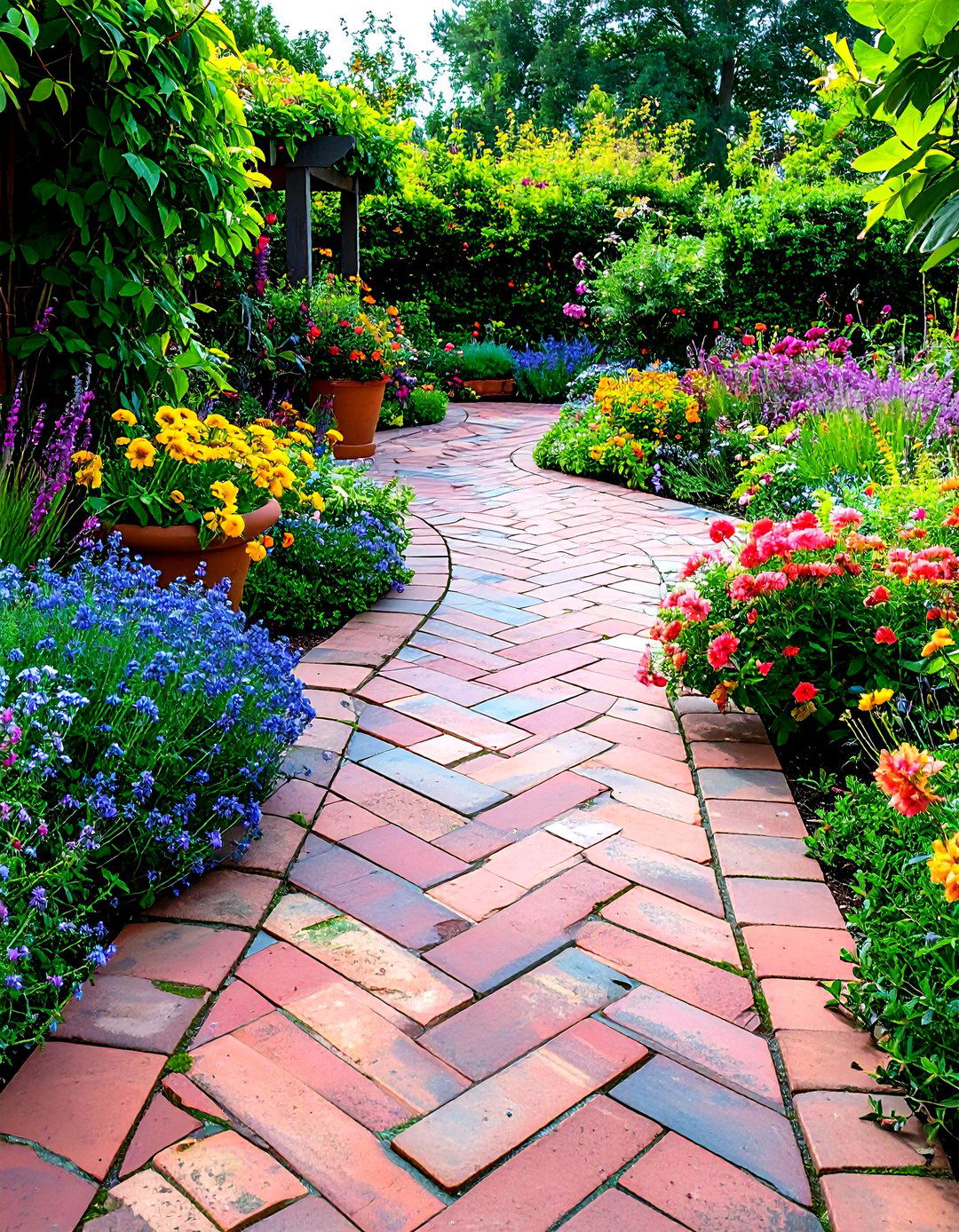
Tumbled-edge clay bricks laid in a herringbone or basket-weave pattern echo storybook cottage charm and pair effortlessly with overflowing perennial borders. Garden enthusiasts praise bricks for their porous surface, which absorbs small spills and gains patina over decades. Soft edging of lavender, yarrow, and coreopsis blurs the transition from patio to lawn and buzzes with pollinators from spring through frost. A low brick seat wall doubles as a planter ledge; fill it with trailing thyme to perfume the air each time someone sits. Finish the scene with wrought-iron lantern hooks and a vintage mailbox repurposed to store pruners nearby.
16. Shade-Sail Front Yard Patio Retreat
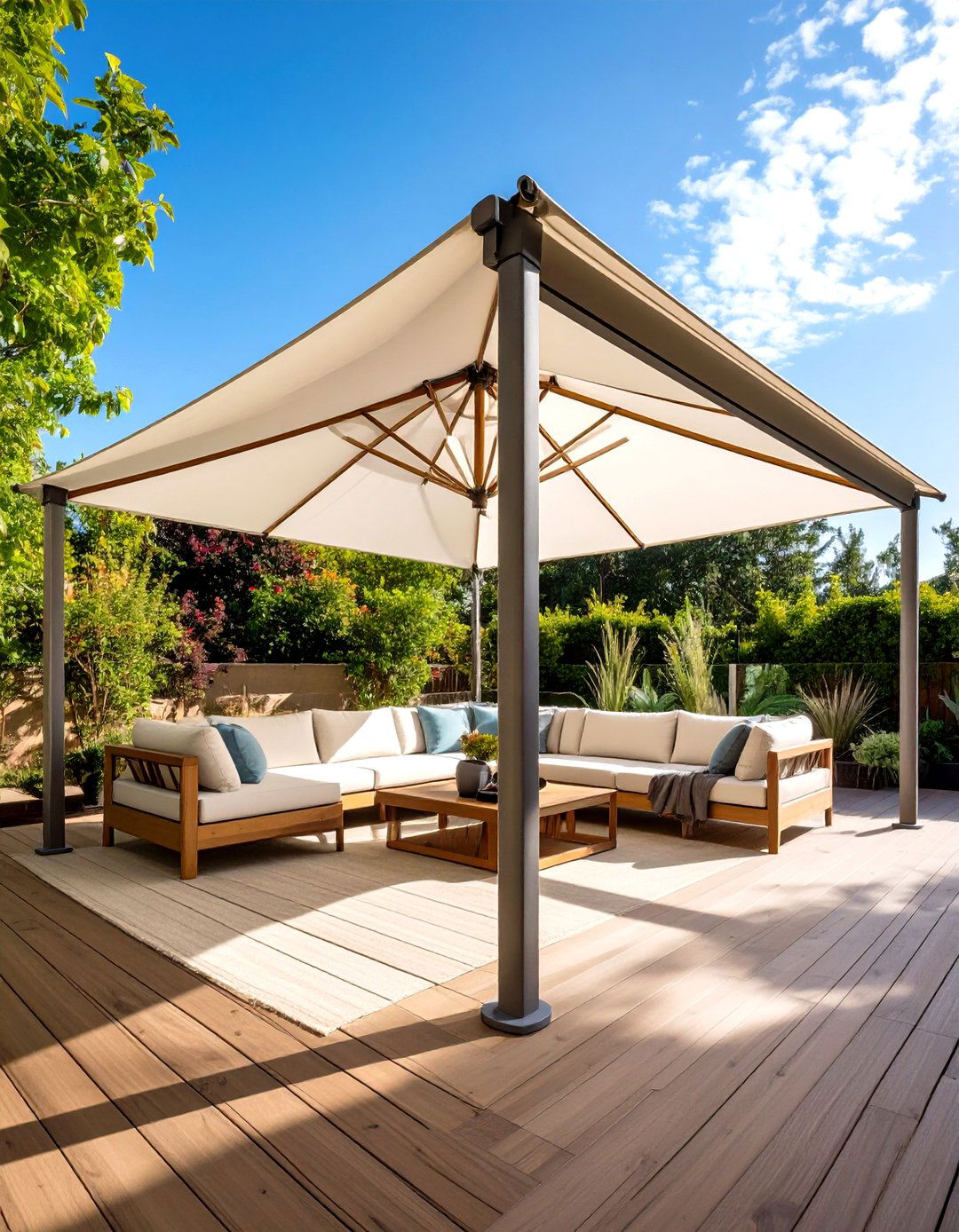
Where property lines limit pergola posts, tensioned shade sails stretch UV-blocking fabric overhead without heavy framing. Retail kits in triangular or rectangular shapes mount to house fascia, fence posts, or powder-coated poles, casting sculptural shadows that shift through the day. Breathable high-density polyethylene weaves allow hot air to escape while still deflecting up to 95 % of sun, creating an airy microclimate ideal for midday lounging. Designers recommend a minimum 30-degree tilt so rain drains off the edge, and stainless-steel turnbuckles for easy seasonal tensioning. When winter arrives, simply unclip and launder the sail to stow until spring.
17. Seasonally Flexible Furniture Front Yard Patio

Choosing modular, weather-resistant seating lets you pivot the patio’s purpose with the calendar—loungers in summer, grouped chairs around a heat lamp in winter. Decor specialists stress proportion: furniture should echo the patio’s footprint without crowding walkways. Light-weight aluminum frames and quick-dry cushions stand up to sudden showers and make rearranging effortless for solo homeowners. Stackable side tables slide aside for yoga mats or children’s chalk art. Underfoot, a roll-up polypropylene rug cleans with a hose, extending outdoor living season deep into shoulder-months without fear of mildew.
18. Dining-Ready Front Yard Patio for Alfresco Meals
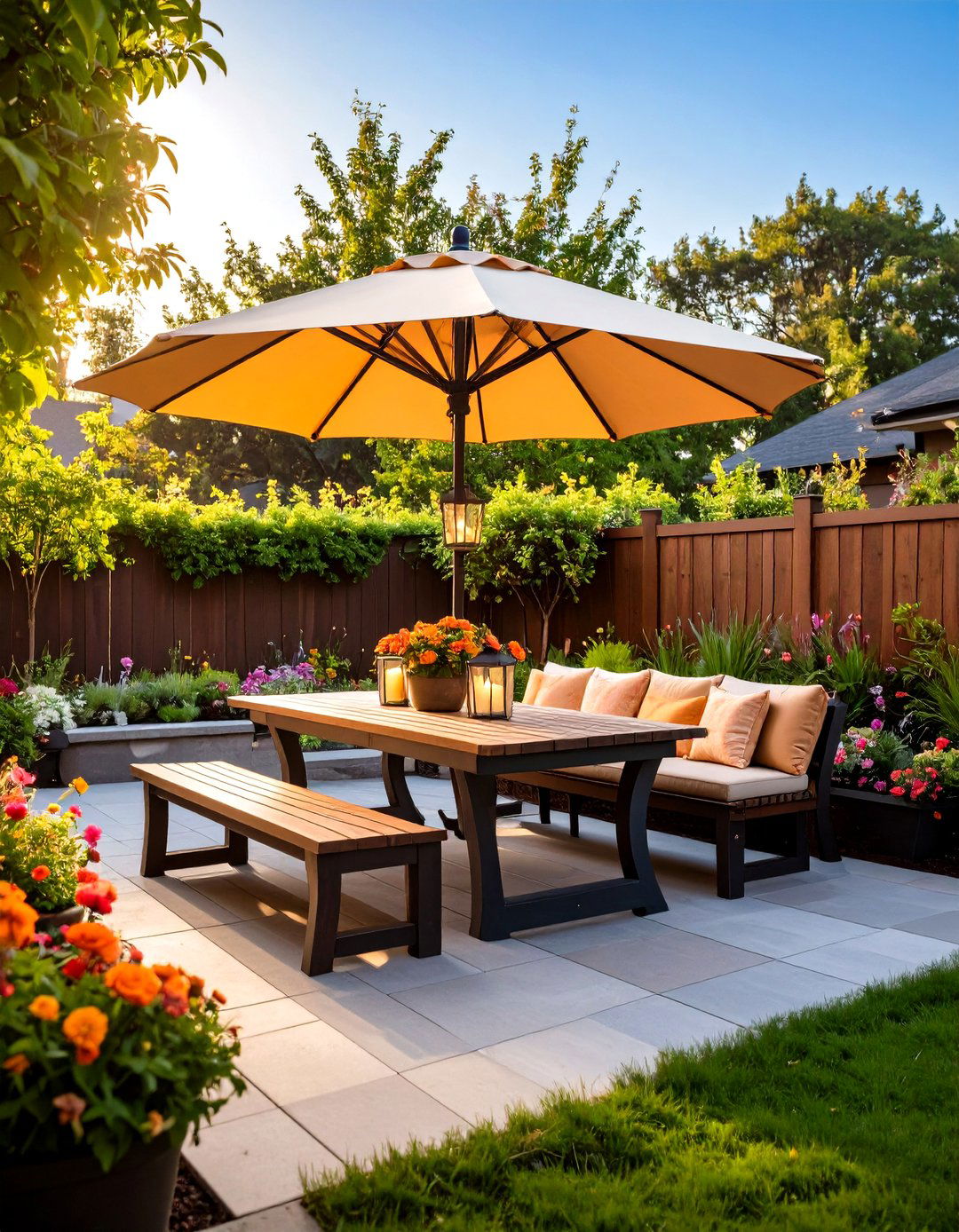
Positioning a slim dining table parallel to the street turns weekday dinners into lively curb-side theatre and strengthens neighborly ties. Stylists suggest bench seating on the public side (saves space) and chairs against the house (comfortable backs). A portable umbrella or cantilever awning supplies midday shade; at dusk, swap overhead lights for battery-powered lanterns to banish glare and keep bugs at bay. Keeping the outdoor kitchen modest—a rolling prep cart, compact grill, and drop-in ice bucket—prevents clutter while still supporting impromptu potlucks. After dishes, wheeled pieces stow neatly against the wall so the patio smoothly reverts to morning coffee mode.
19. Curb-Boosting Mailbox & Planter Front Yard Patio
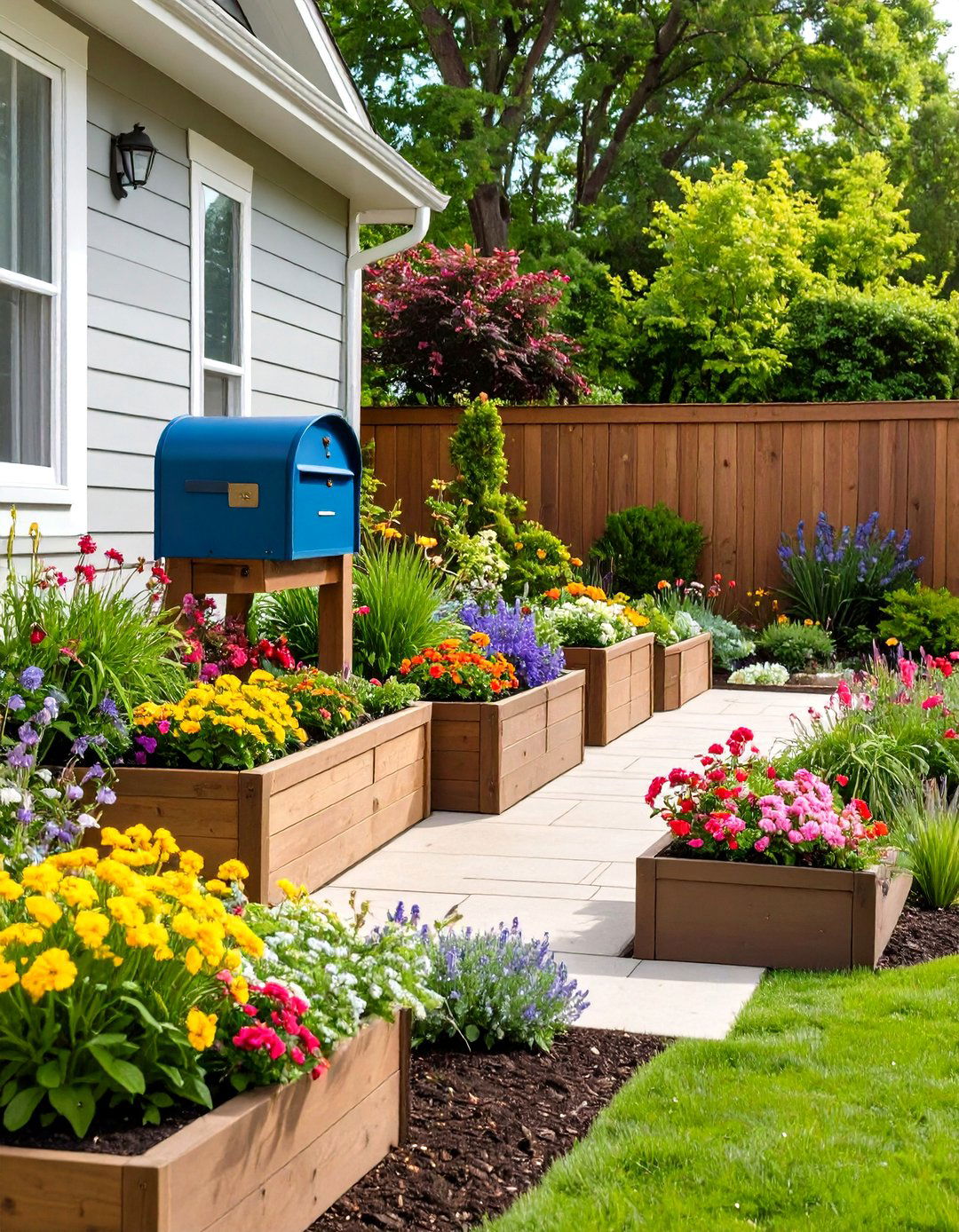
Blending the patio with a mailbox garden pulls functional elements into one unified vignette. Tough, heat-loving perennials like sedum, coreopsis, and lavender handle reflected warmth from pavers while offering nonstop color. Raised planters flank the mailbox post, making seasonal swaps—pansies, ornamental kale, holiday greens—quick work without kneeling. People tracking outdoor décor trends note that lattice-style planter boxes echo patio privacy screens, tying the composition together. For tight easements, a single sculptural pot planted boldly can still read from the street and guide guests to the seating zone, doubling as address-number display.
20. Smart Tech-Enabled Front Yard Patio
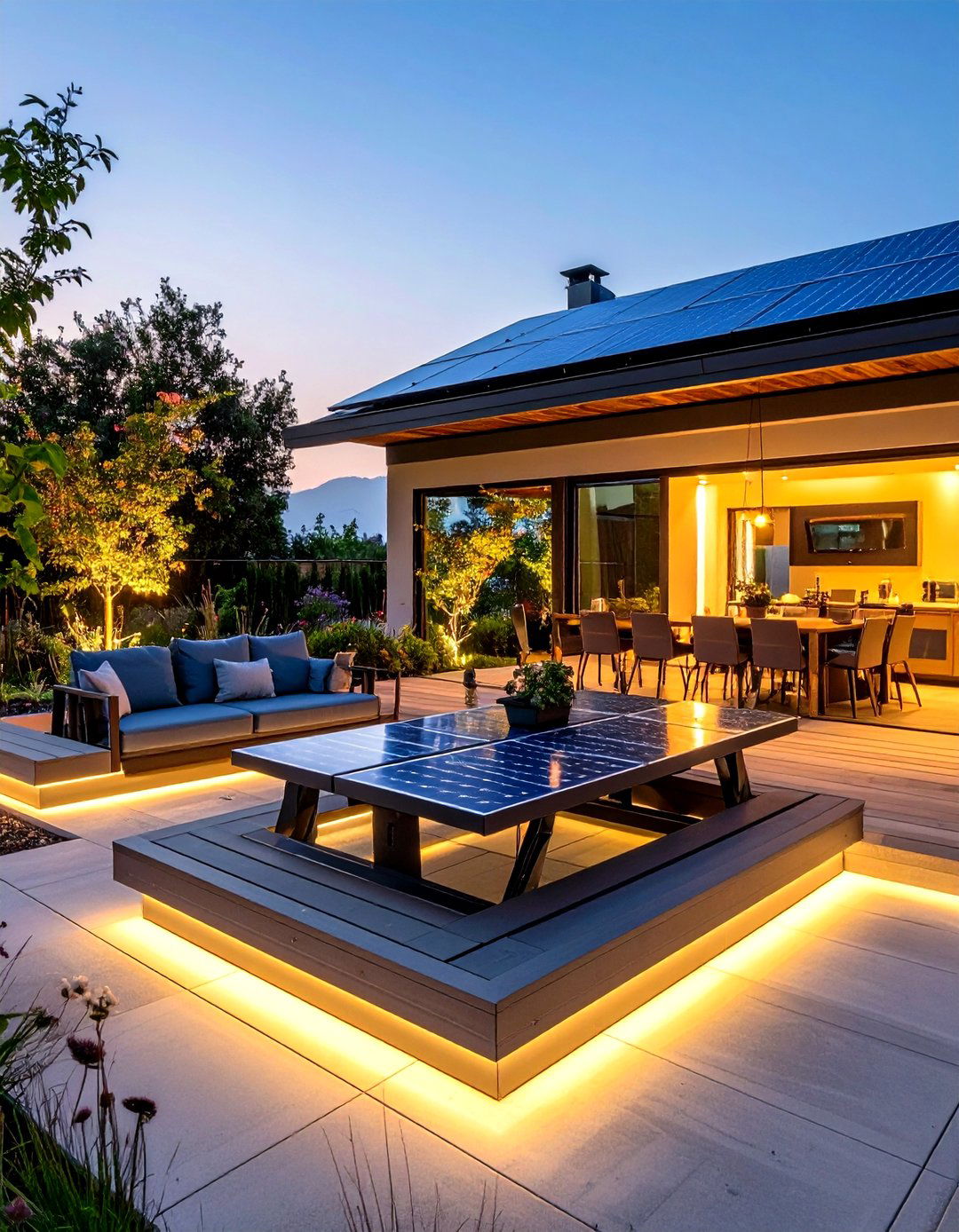
Forward-looking homeowners are integrating solar-powered benches, hidden charging docks, and app-linked lighting so the patio becomes an extension of the smart home. Manufacturers now offer benches with built-in wireless pads that top up phones using stored solar energy harvested through the seat backs. Trend analysts predict that by 2025, demand for connected awnings, Bluetooth speakers, and voice-activated heaters will surge as outdoor Wi-Fi coverage improves. To future-proof your design, run conduit under pavers before finishing and spec low-voltage transformers that can accept add-on devices later. Smart features elevate convenience yet remain invisible until needed, preserving the patio’s clean aesthetic.
Conclusion:
Whether you gravitate toward the rustic crunch of gravel, the crisp geometry of concrete, or the storybook sweep of brick and blooms, a thoughtfully planned front yard patio multiplies living space, sparks community, and raises property value. Embracing permeable surfacing, LED lighting, and native planting delivers sustainability alongside style, while add-ons like privacy screens, shade sails, and smart benches refine comfort and function year-round. Ultimately, the best concept blends personal taste with site realities—sun, slope, and street presence—so your patio feels as inevitable as the front door itself, welcoming you home day after day.



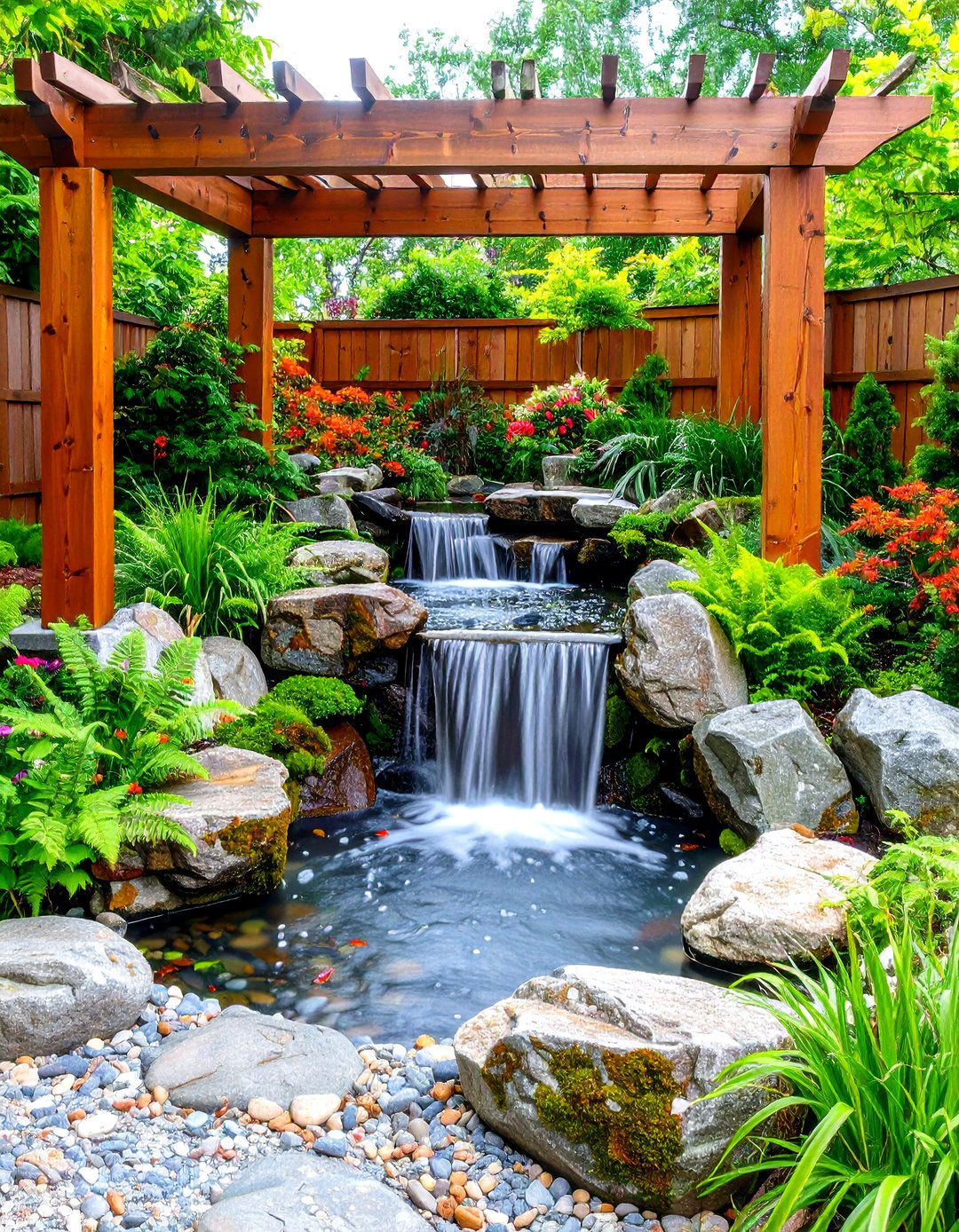

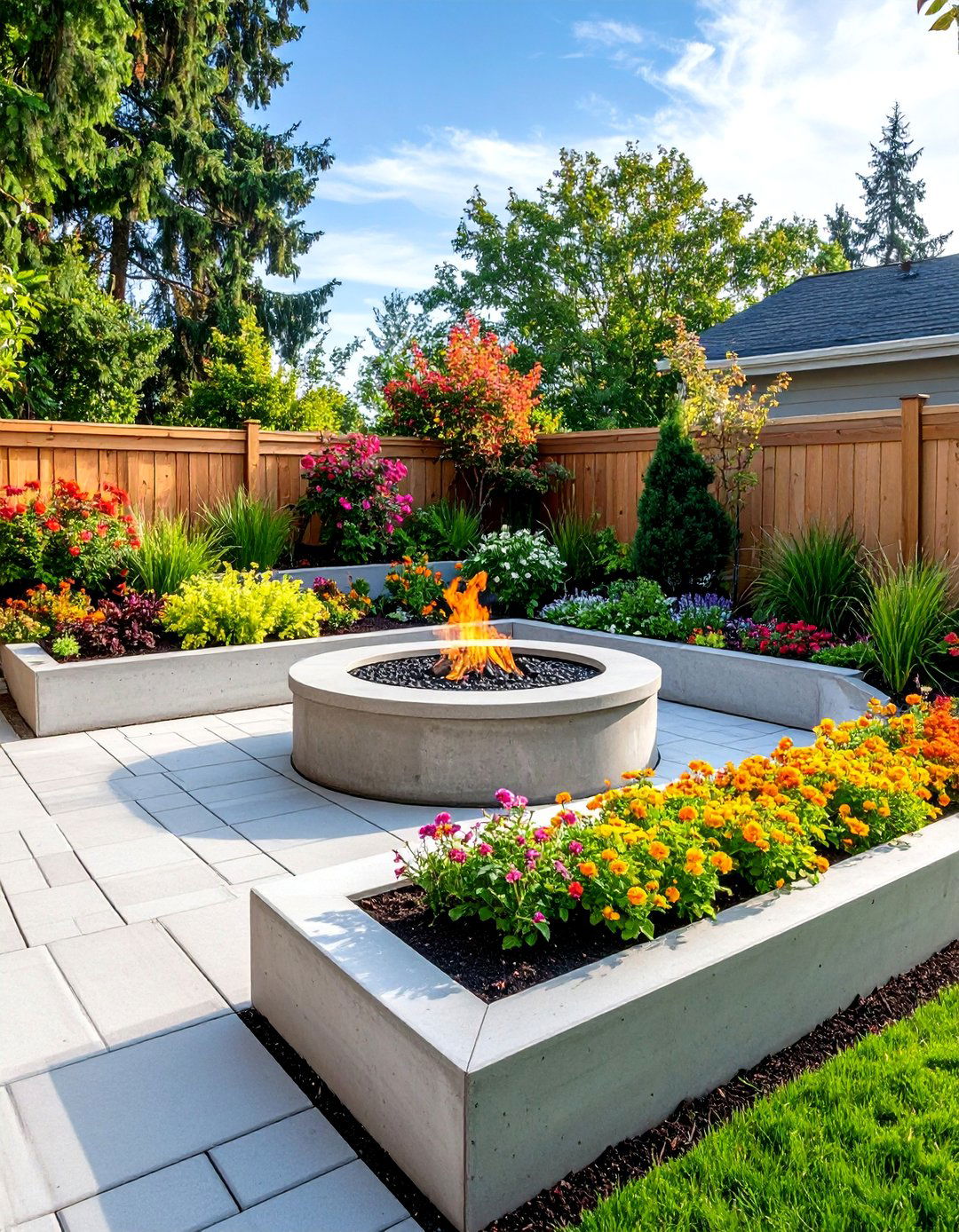

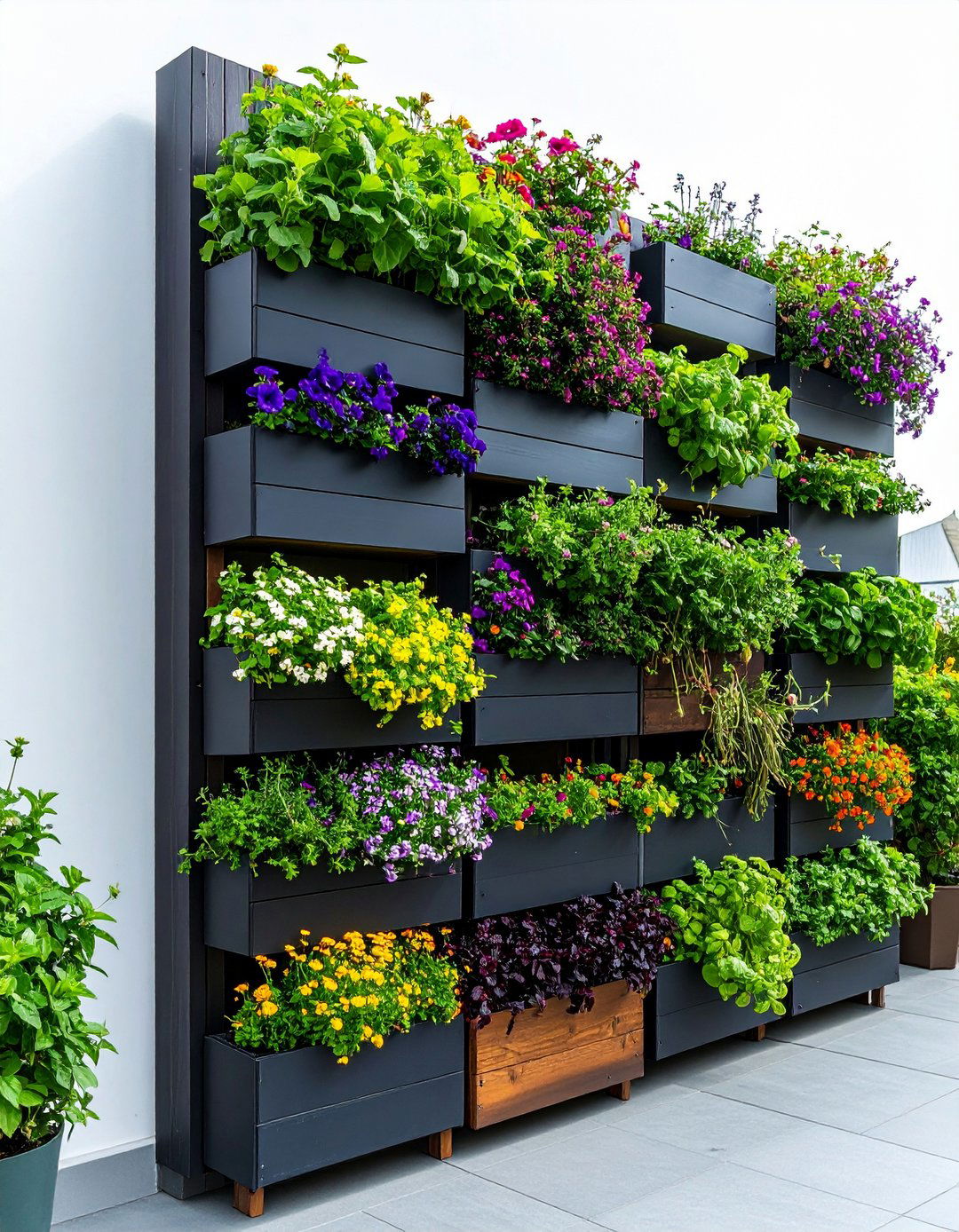
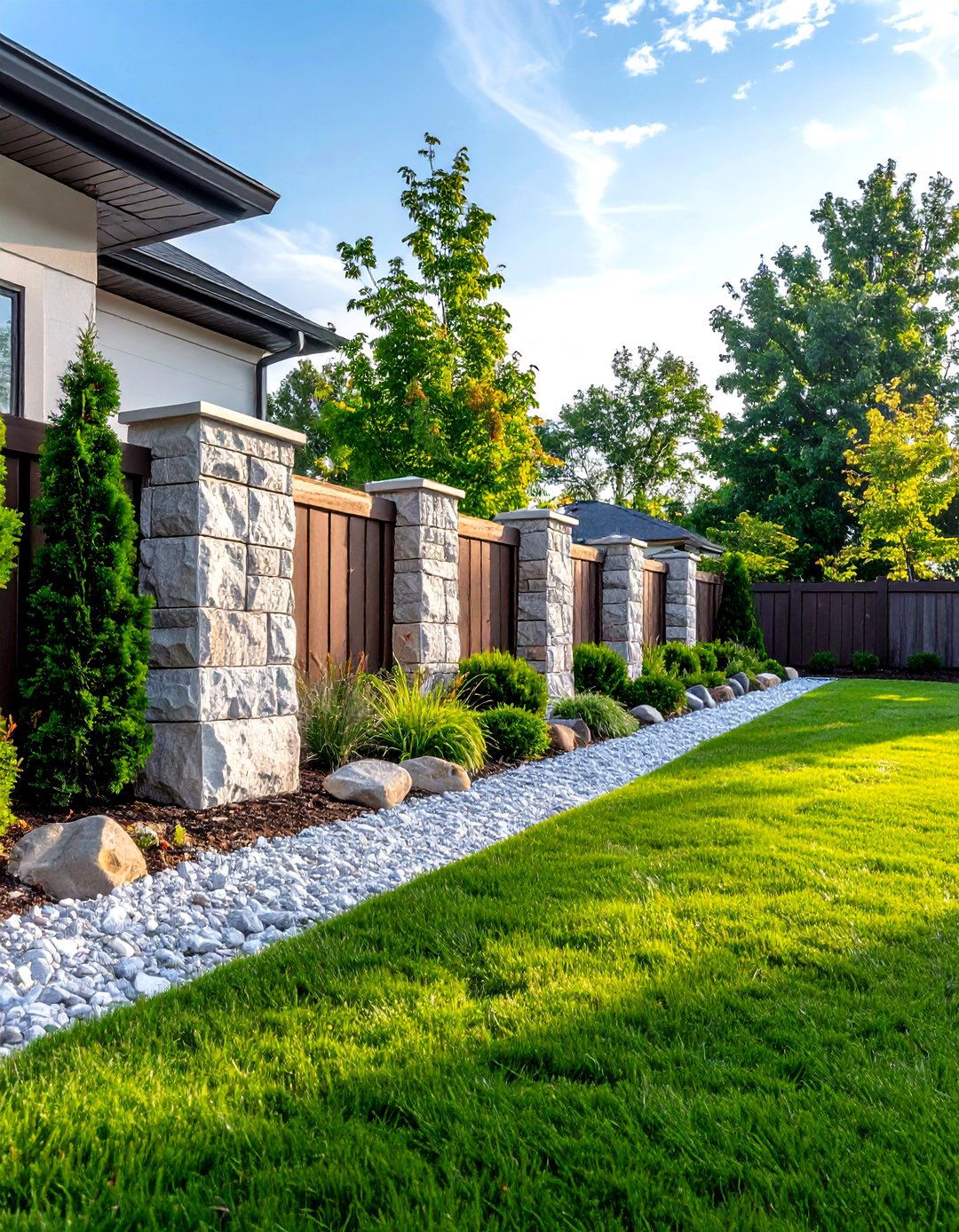
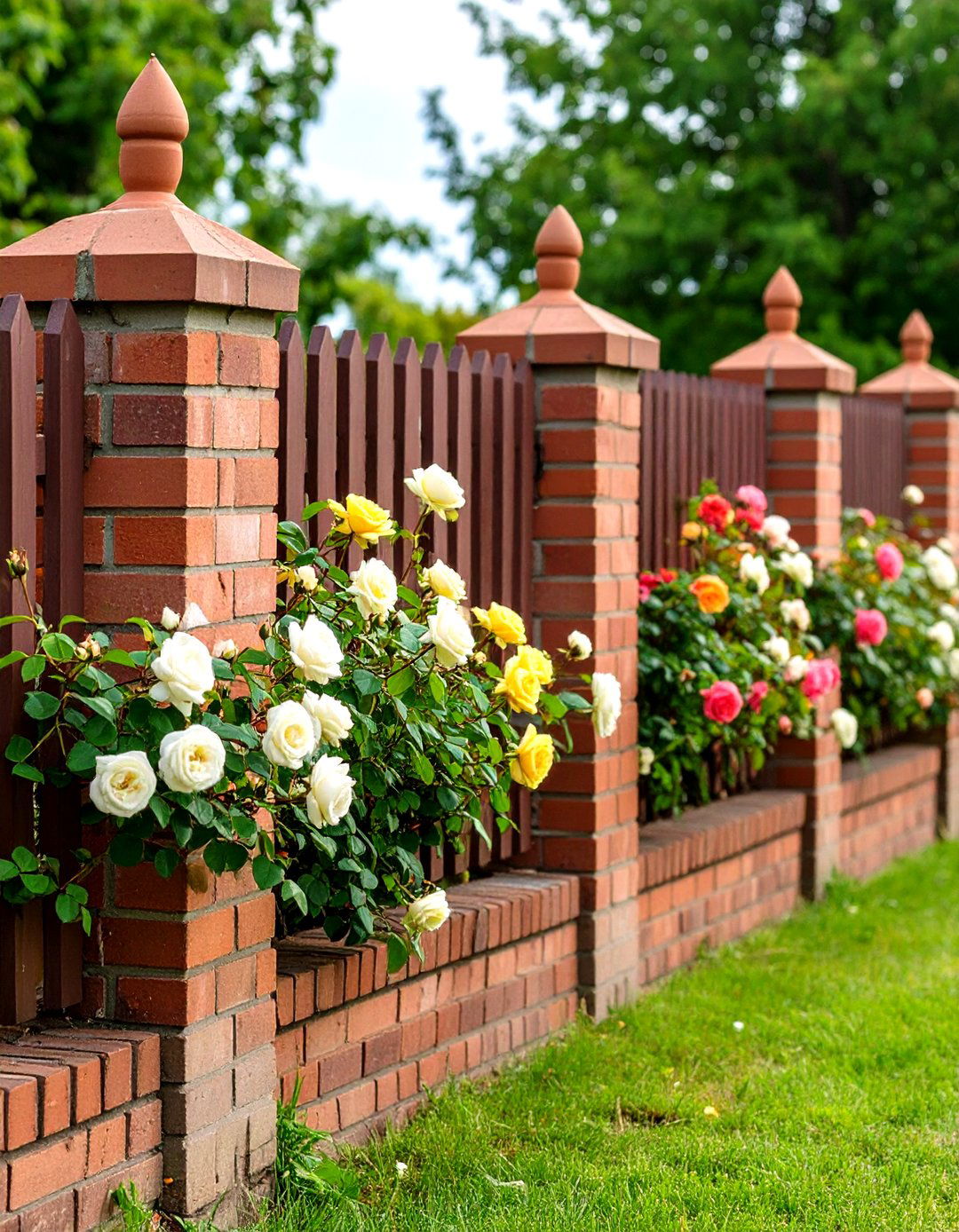
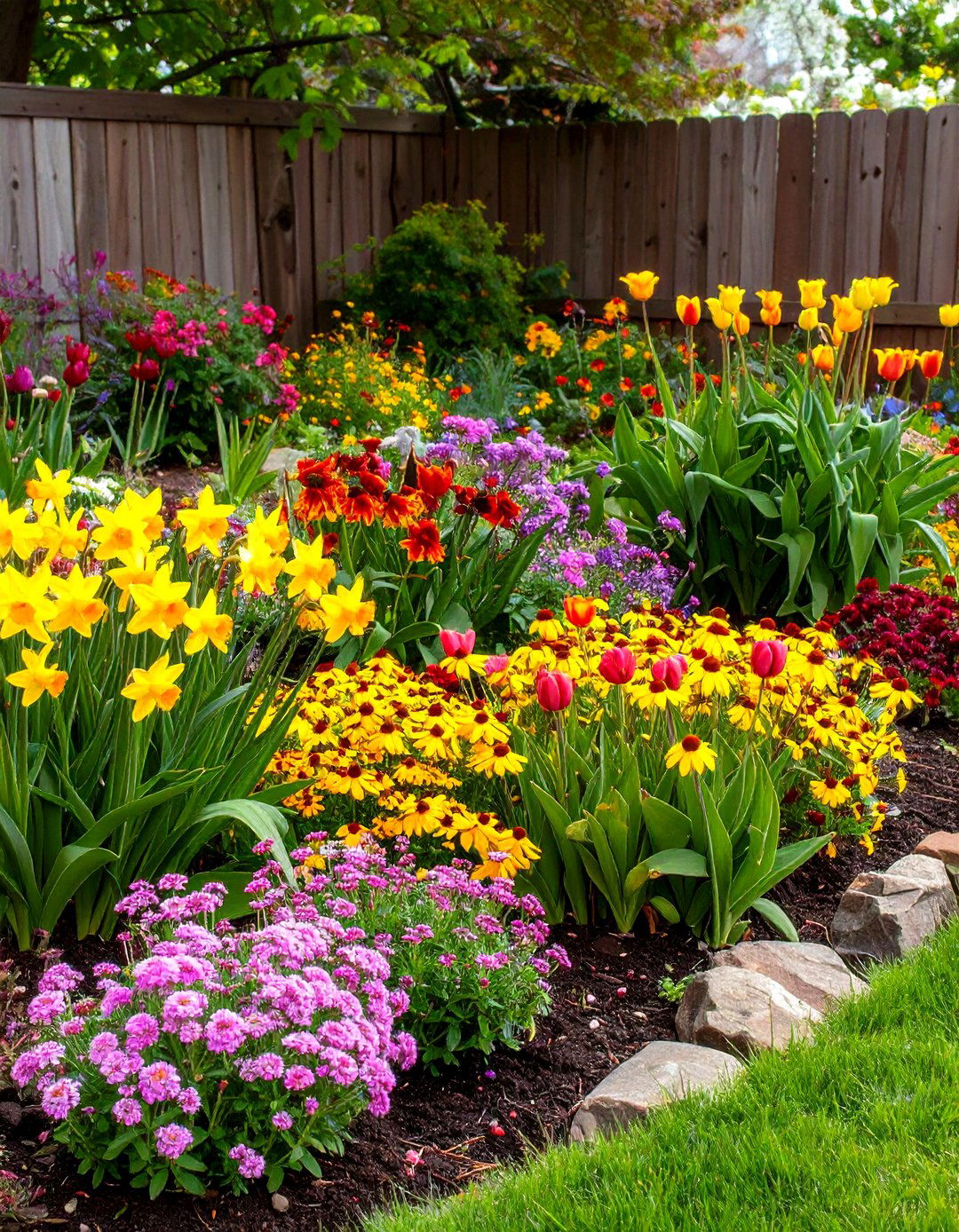
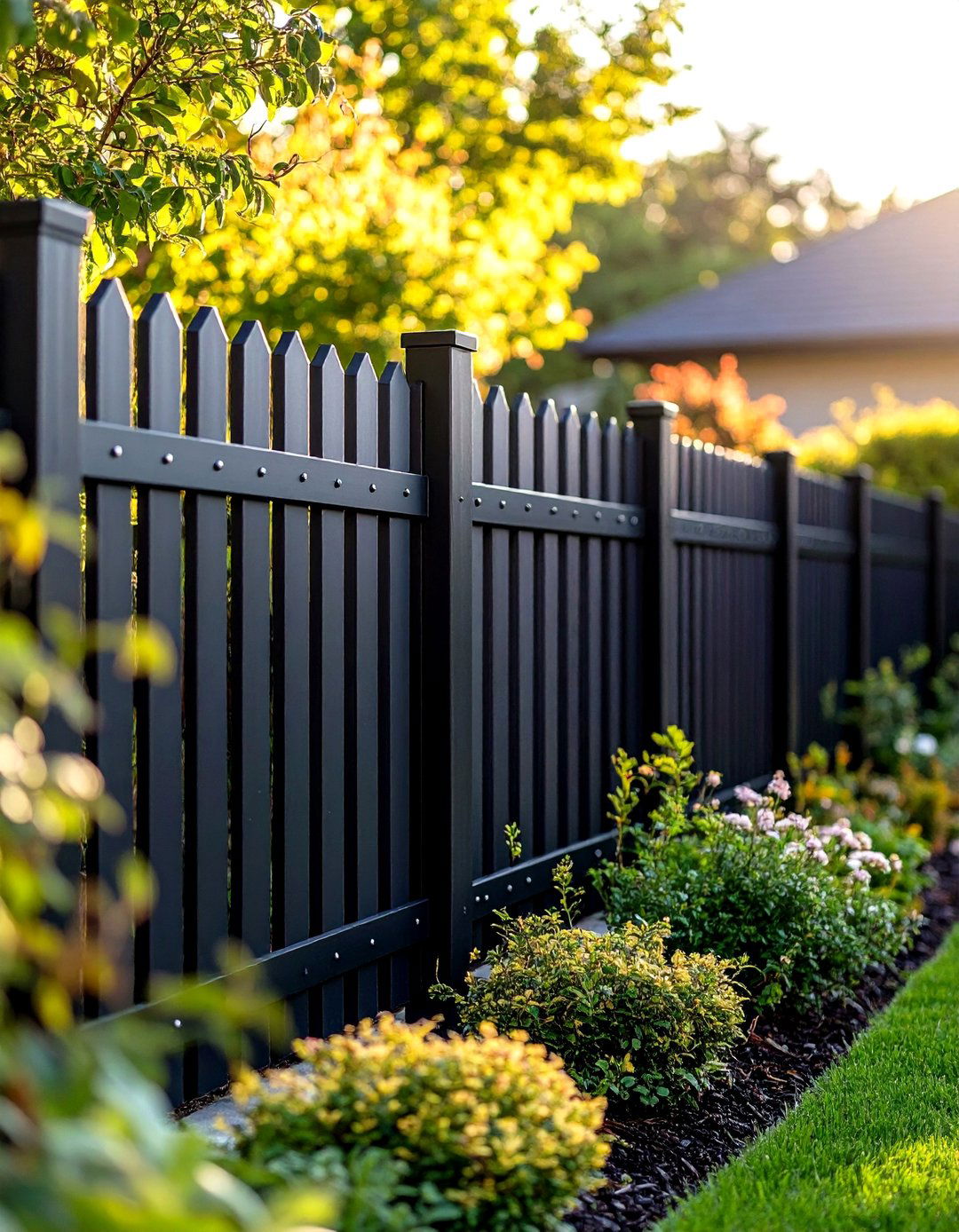
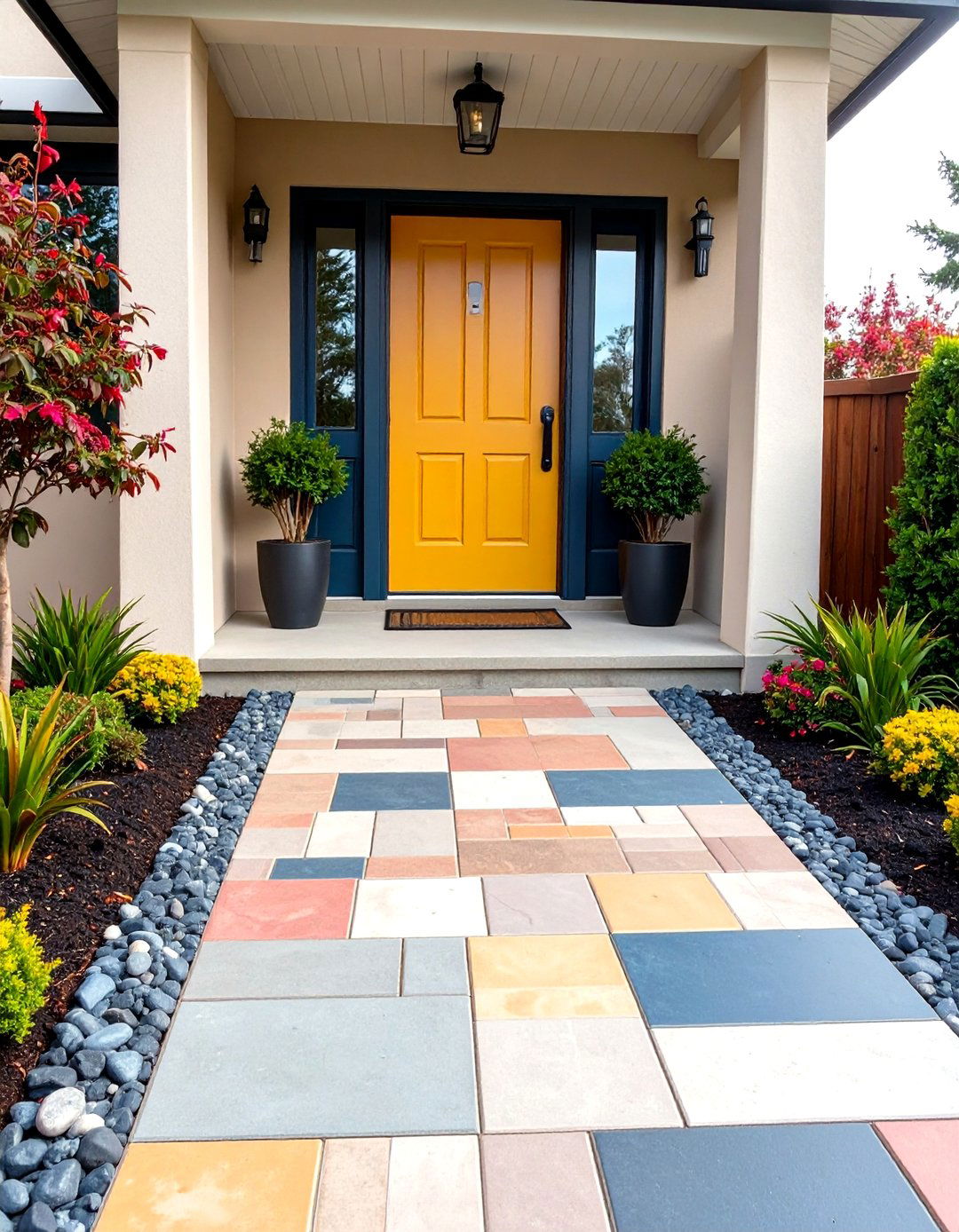
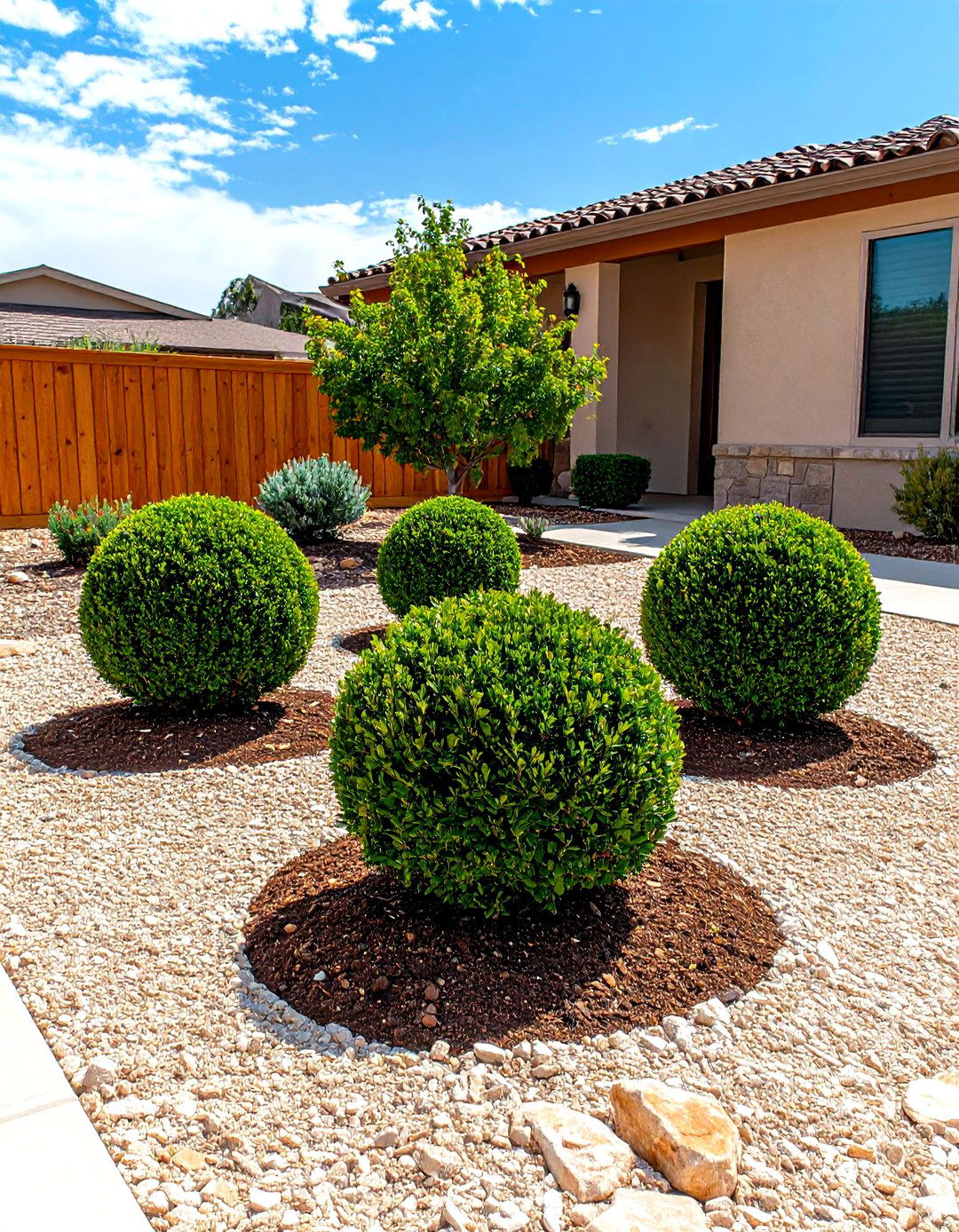
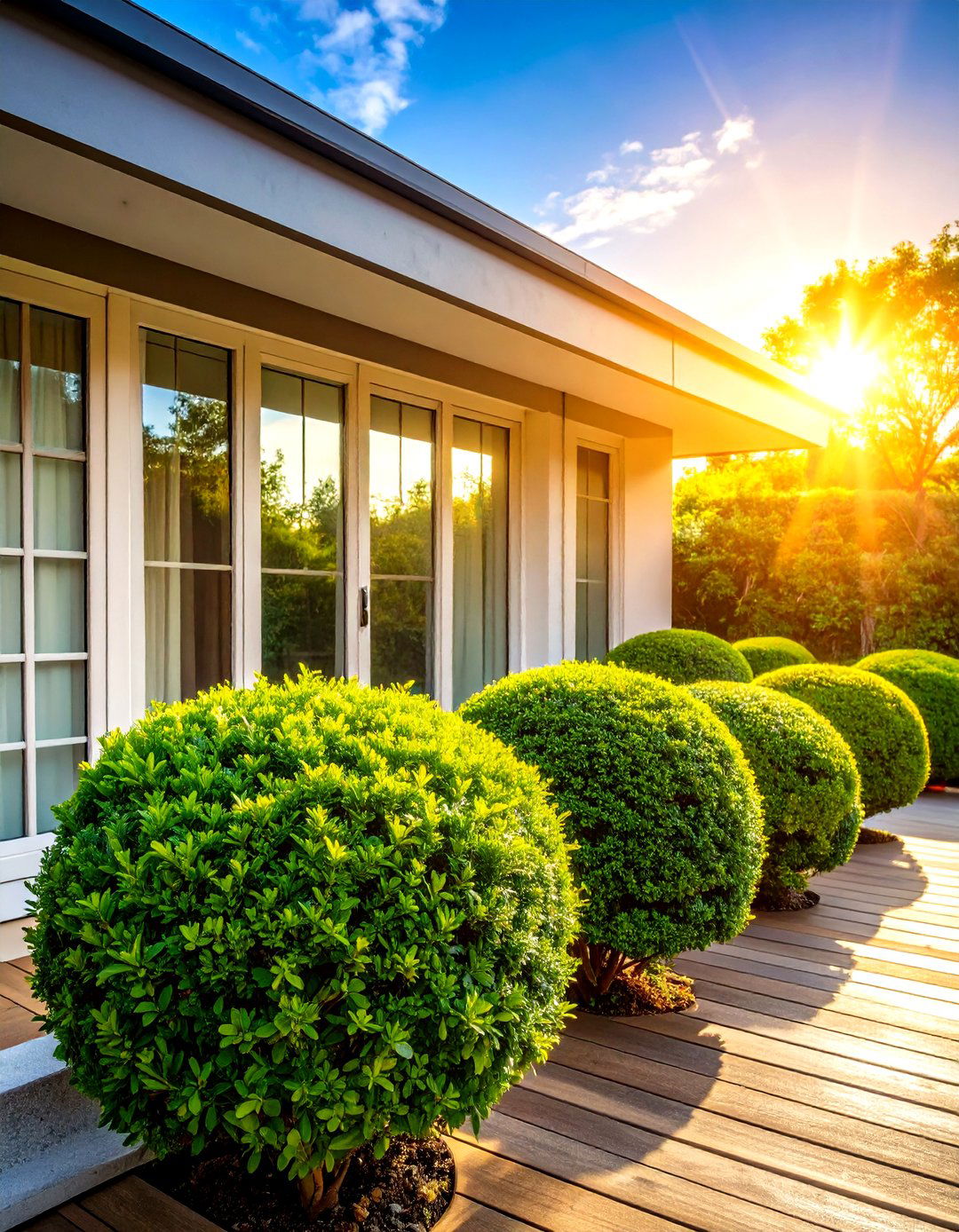
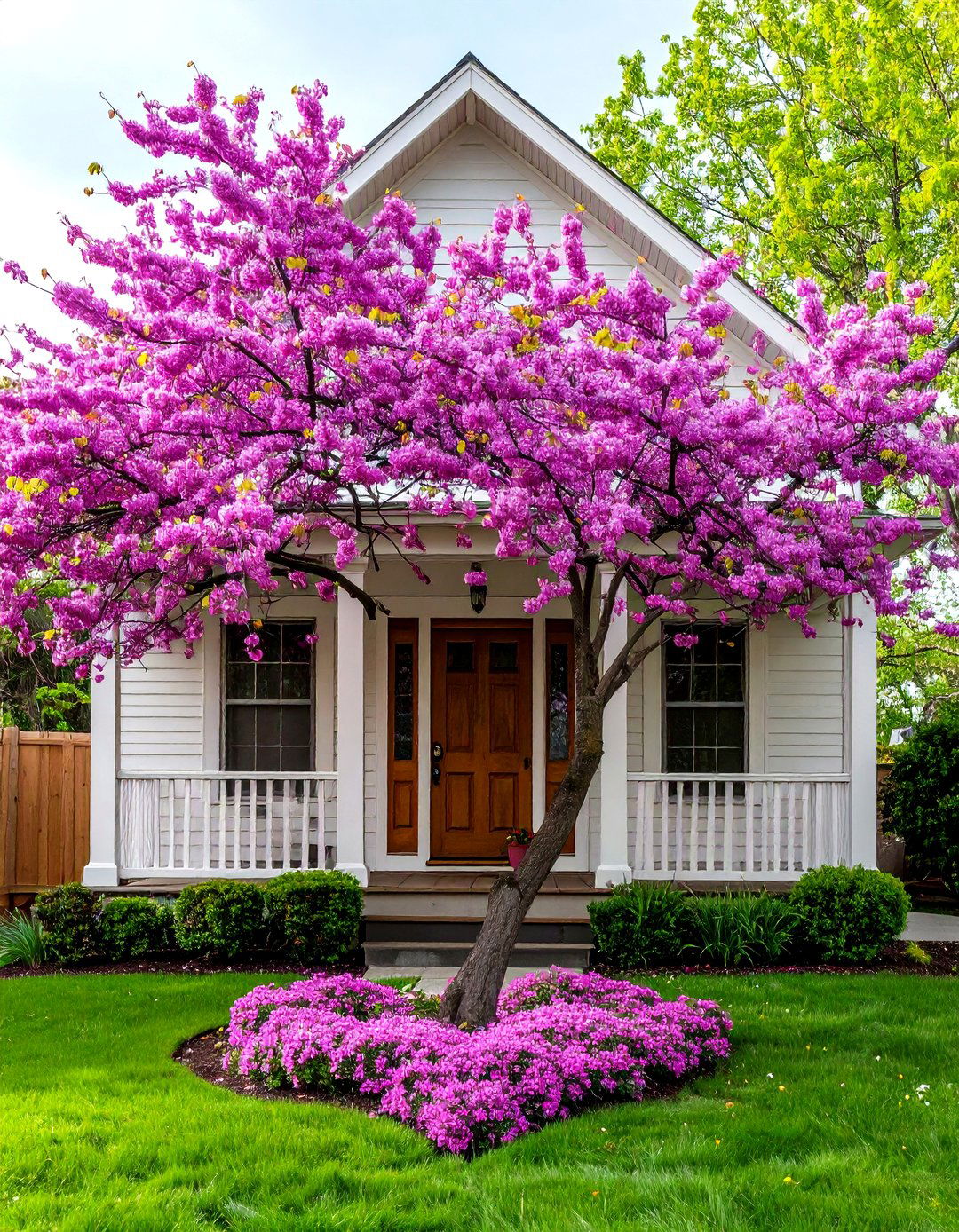
Leave a Reply